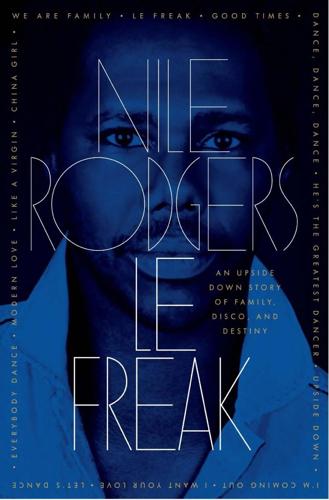
Le Freak: An Upside Down Story of Family, Disco, and Destiny
by
Nile Rodgers
Published 17 Oct 2011
Not only did we make the convention (the song was pumping out of every conventioneer’s hotel suite), it was also playing in the important (chart-reporting) clubs, with Atlantic’s label on it. We had added the name of one of the top DJs at the über-disco Studio 54, Tom Savarese, as the mixer (in truth he did an edit that we never used), which was an important move because Studio 54 was the center of the disco universe. And with that, we were off and running. By the time Buddah got wind of it, it was too late; they could only play catch-up. “Dance, Dance, Dance” was the hit of the disco convention. And that second-generation master is the version Atlantic put out.
…
Chic not only played there, we got a police escort. I couldn’t believe how almost everywhere I went, once people found out I was the guy from Chic, they’d treat me like a rock star. And where does a fledgling rock star hang out? Back in the seventies, there was only one place that fit the bill: Studio 54. THE FIRST TIME I WENT to Studio 54, I was not treated like a star. My music pumping on the dance floor, the supermodels on our album’s cover, DJ Tom Savarese (who had mix credit), and my then girlfriend Nefertiti were the stars. Nefi had graduated from the prestigious Fashion Institute of Technology. Many FIT people partied at Studio, and I was Nefi’s guest.
…
We downed a few bottles of vintage Dom Pérignon, and a little coke, which I’d started snorting while touring on the road. I picked up my guitar, started jamming on a guitar riff and singing the words that the stage doorman had said to us earlier, “Fuck off,” and Nard added, “Fuck Studio 54—aw, fuck off.” He grabbed his bass and we played this over and over, grooving and laughing. We developed the groove and even wrote a bridge, then came the chorus again: “Awww, fuck off—fuck Studio 54—fuck off.” “You know, this shit is happening!” Bernard said, while pulling his sunglasses down his nose in order to achieve genuine eye contact with me. He did this whenever he was serious, because almost everything was a joke to us.
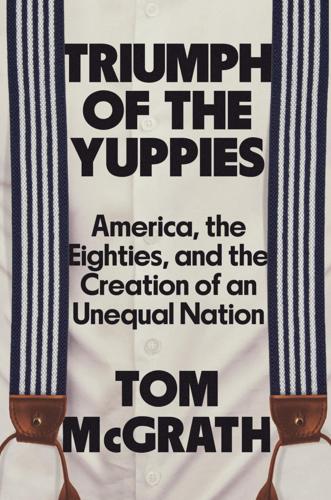
Triumph of the Yuppies: America, the Eighties, and the Creation of an Unequal Nation
by
Tom McGrath
Published 3 Jun 2024
First was the Underground, a trendy downtown New York club. Then came the iconic Studio 54, now being run by Jerry and Mimi’s friend Mark Fleischman (who’d bought the club after co-owners Steve Rubell and Ian Schrager had been sent to jail for tax evasion). It was an arrangement that made sense on both sides: The Rubins needed a large venue for their ever-more-in-demand post-work soirees, while Fleischman was hungry to have someone inside the club in the early evening hours, since things didn’t really start rolling at Studio 54 until ten or eleven o’clock at night. The salons—officially produced by what was now called Jerry Rubin Business Networking Salons, Inc.
…
In the summer of 1985, Jerry and Mimi Rubin had found a new home for their networking events—the Palladium, the onetime theater and concert hall that had been newly transformed into a nightclub by Steve Rubell and Ian Schrager, the creators of the original Studio 54 (who were reemerging into the public eye after their prison stints). Designed by world-renowned architect Arata Isozaki, the club’s new interior was far more spectacular than Studio 54 had been and quickly became the buzz of New York—and the Rubins’ networking nights hit new levels of success, with thousands of people every week showing up, paying the cover charge, and handing over their business cards to be added to Jerry and Mimi’s massive Rolodex (which now totaled a reported sixty-seven thousand names).
…
“You didn’t have to justify making money or getting ahead of anybody. It wasn’t so much greed as entitlement.” In the spring of 1983, if you happened to be walking on a certain block of Fifty-Fourth Street in New York City around seven o’clock on any given Wednesday evening, you’d likely see a group of young people lined up outside the famed nightclub Studio 54. But the crowd wouldn’t be dressed as they had been at the height of the disco phenomenon half a dozen years earlier. There’d be no tight pants and open-collared shirts; you’d see instead dark power suits and nice leather briefcases. John T. Molloy would have approved. And if you poked your head inside the club?
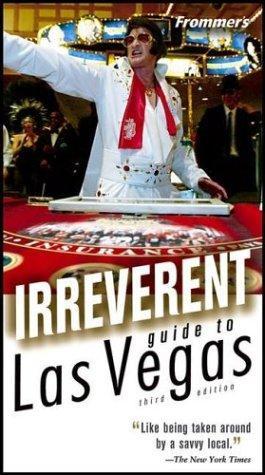
Frommer's Irreverent Guide to Las Vegas
by
Mary Herczog
and
Jordan S. Simon
Published 26 Mar 2004
These days they aren’t much more interesting but they are much more self-important, trendy, and omnipresent. Virtually every hotel/casino has some version of a dance club ruled by stone-faced door NIGHTLIFE Drugs NIGHTLIFE 184 thugs and trolled by tourists aching with “look at me” attitude. Studio 54 at MGM Grand is probably the most popular, owing in part to its Strip-side location and part to the name recognition factor. Based on the infamous discoera New York hot spot, this Studio 54 pays homage to the hedonistic excesses of its ancestor with ultra-luxe furnishings in a minimalist deco/industrial three-story room. Be prepared for a long wait to get inside. Across the street at Luxor you’ll find the other tourist-driven club, Ra.
…
The high-energy Race and Sports Book, traditionally where all the heavy betters and bookies hang out, particularly epitomizes old-time gambling adrenaline. Stardust combines Las Vegas grime with long-gone glitz: Gum-cracking cigarette girls patrol the premises like in a ’40s film noir, while liquid crystal balls and mirrored columns scream the Studio 54 of the ’70s. Downtown, Binion’s Horseshoe is for serious gamblers, even at the low-end tables, where everyone looks gruff and dyspeptic. Talking (especially at the poker and blackjack tables) is kept to a minimum. The legendary home of the World Series of Poker, it has a classic Runyonesque feel.
…
Ibiza USA 16 15 Lagoon Saloon 10 Rochelle Ave . Le Bistro 6 W bb ay ie 15 16 Light 14 Monte Carlo Brew Pub 18 Lana Ave. Harmon Ave. Napoleon’s 15 h s a 17 W a Petrossian 14 Tropican 18 Ra 21 Red Square 22 MGM Grand Adventures Risque 15 Theme Park rumjungle 22 20 Convention Center 19 Shadow 12 Tropicana Ave. Sky Lounge 17 Studio 54 20 Moving Walkway Tabu 20 Reno Ave. 21 Terrazza Lounge 12 McCarran Top of the World 5 International Airport V Bar 9 Hacienda Ave. Venus 9 22 Spring Dio Dr. Fashion Show Mall Emerson Ave. Sheraton Desert Inn Country Club Mountain Rd. REEDER CIR Rd . Desert LA 8 Fashion Ln . Convention Center Dr.
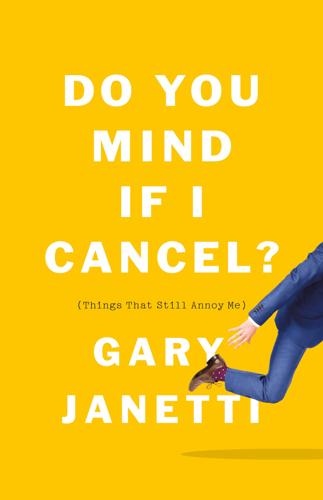
Do You Mind if I Cancel?: (Things That Still Annoy Me)
by
Gary Janetti
Published 21 Oct 2019
As soon as one check stopped the entire operation would fall apart. I answer an ad in The Village Voice (the Village Voice was the internet in the ’90s) for an open call to work at the Paramount Hotel. I’m curious as to why there is a cattle call audition to work in a hotel until I discover that the new owner of this hotel is Ian Schrager of Studio 54 fame, fresh out of prison for tax evasion. It is the ’90s and hotels are the new discos he has decreed. I’ve never thought of working in a hotel but I enjoy staying in a hotel, so how different could it be? Besides at this point I’ve been out of work for a week. (I tried to find something before leaving my job at NYU but I discovered I didn’t have any skills other than working in the service industry.
…
(“This place is crazy!”) (Anthony is my first real friend and we quickly form a close bond that is something I haven’t experienced before. He is adorable, brown curly hair, teeth, khakis, and I learn how to dance from watching him. We go to the campus club, Hofstra USA, together and it might as well have been fucking Studio 54. We eat together, we take classes together, we do everything together. He is straight and I fall in love with him the way you do with your first real friend. We lose touch after graduation, I don’t know why. All these years later and I still dance like Anthony did at eighteen.) I approach each of these outings as if I’m Jane Goodall.
…
I would inevitably fall asleep behind the front desk on the dirty carpet. Drooling and snoring all dignity long gone. When a guest needed something Lola would nudge me with her foot. Lola was the one other person who worked with me overnight. She had been working the front desk at the hotel for years, long before it had been taken over by Studio 54’s Ian Schrager and transformed into one of the first boutique hotels in the city. She was no-nonsense, moved in slow motion, would hang up the phone on guests, and I fucking loved her. Once housekeeping would close for the evening they would roll up a cart of videos (guests rented VHS videos then, it was a backward time, so much mortifies me to write), and if guests wanted to rent a movie after midnight they would need to call the front desk and order it from Lola and then I would bring it up.
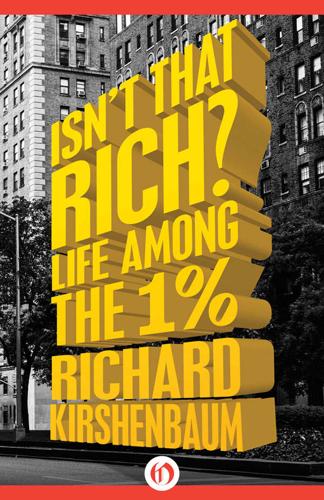
Isn't That Rich?: Life Among the 1 Percent
by
Richard Kirshenbaum
and
Michael Gross
Published 9 Jun 2015
A few days later, I was having breakfast with a good friend in his Madison Avenue aerie, where the morning sun illuminated the Greco-Roman sculptures, Renaissance paintings, Georgian silver, and midcentury Modern furniture. “When I go to Art Basel, I don’t see art collecting as much as I see competitive spending,” he said. “I see the same people who thirty years ago were at Studio 54 who are still behind the velvet rope. Only now it’s Art Basel, and the entrance fee to an A-list party is a hundred thousand dollars for a starter piece.” He offered me a serving dish of gravlax on toast points. “Does that get them the piece and the invite?” “Generally both. I’m not sure they know what they’re buying, but they want to be players, and they take a dealer or consultant’s advice.
…
The more you do, the better you look, the better you feel. If you don’t do it, well …” She paused with a dramatic flair that suggested a butter-cookie-and-pound-cake-fueled descent into slothdom. “You can say that because you’re as skinny as a sixteen-year-old and look twenty-five,” I said, admiring her Studio 54–worthy vintage DVF wrap dress. “Thanks, darling. Although I have found there is a real cost; the skinnier you are, the better you look, the meaner some of the girls are to you,” she said over perfectly grilled Brussels sprouts. “They want nothing to do with you if you’re a size two or less. But I always say, ‘Be high maintenance but maintain yourself.’”
…
The next week, I met a famous ’70s party girl who maintains her style-icon status for breakfast at the Crosby Street Hotel, where she ordered grilled figs with honey and nuts and retrieved a bagful of vitamins while rummaging around in her bag, exposing an aromatic bag of weed. The dark sunglasses, bedhead hair, and African jewelry were all amiss, suggesting she was still recovering from a night at Studio 54. “No one had a landing strip back then, in the ’70s,” she said with a yawn. “Everyone had big bushes. The men had ’fros and hairy chests and wore poly bellbottoms. It was sooo sexy.” “Do you think it has changed?” “Back then, we did it for sport. Everyone did. The wrap dress came on and came off.”
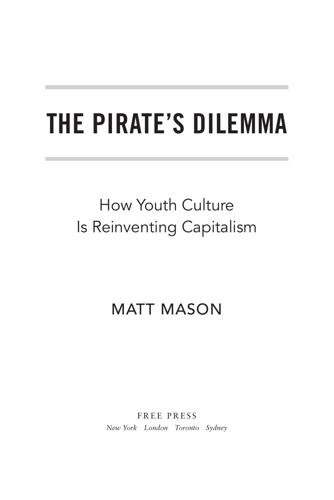
The Pirate's Dilemma: How Youth Culture Is Reinventing Capitalism
by
Matt Mason
Disco was becoming the kind of social hierarchy David Mancuso and the original pioneers were trying to escape, spearheaded by commercial superclubs such as the infamous Studio 54 and the rise of manufactured, formulaic disco records being churned out by the major labels. Its original ideals were getting lost in a blizzard of sequins, cocaine, and flared polyester. At the same time, in the world of computer programming, the letter-writing geek managed to turn the tide of opinion, and software was widely considered private property by the early 1980s. He ended up scratching a good living from his software, too. The letter-writer was Bill Gates, founder of the Studio 54 of personal computing, Microsoft Software, which had previously been as free to use as a public park, became a gated community.
…
Tom's mixes ruled the Sandpiper for two seasons, and the young pinup went from unknown audio activist to New York City disco darling, remixing for Gloria Gaynor (transforming an entire side of her album Never Can Say Goodbye into one seamless eighteen-minute mix), Grace Jones (who at the time was showing up at Studio 54 completely naked on a regular basis), and everyone who was anyone in disco. The male model had become a grandmaster without ever setting foot behind the turntables. Tom took the idea of the version, remixed it, and dropped it into the American consciousness. Soon the rest of the disco DJs found their way into the recording studio, and the remix emerged as a canon of dance music.
…
The letter-writer was Bill Gates, founder of the Studio 54 of personal computing, Microsoft Software, which had previously been as free to use as a public park, became a gated community. Gates became the richest man in the world. Studio 54 and Microsoft monetized the ideals of sharing and networking, but other Homebrew and Loft regulars decided to take the road less traveled. Disco's revenge was house. As the commercialized disco scene died a slow death, its original source code was hacked by DJs such as Frankie Knuckles and Larry Levan, who forged it into the new house and garage sound, cleansing the music of crass commercialism and reinvigorating it with disco's original progressive ideals. House music drifted across the Atlantic in the mid-1980s and found favor with partygoers on the Balearic island of Ibiza, where it was combined with a new drug known as ecstasy.
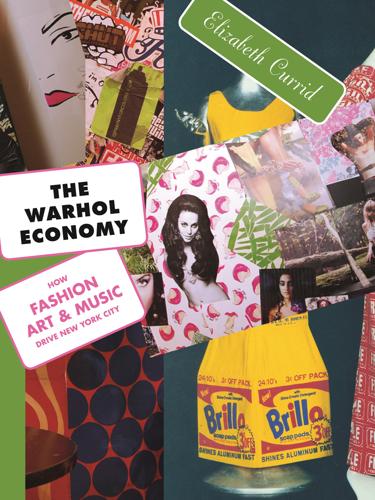
The Warhol Economy
by
Elizabeth Currid-Halkett
Published 15 Jan 2020
MTV Raps, performances on Saturday Night Live, the establishment of hip-hop record labels (Def Jam Records by Russell Simmons and Rick Rubin), and the increasing stardom of rappers like the groups Run-DMC and the Beastie Boys.52 Cult movies like Style Wars (1985) and Wild-Style (1983) glorified the gritty subculture of hip-hop and graffiti. Some of this transformation manifested itself in the increasing expense and elitism of nightclubs, from Danceteria to the Mudd Club to Palladium to Studio 54, where as Carlo McCormick explained to me, “At Studio 54 you pretended you were holding coke and gay . . . you pulled up your shirt to show your track marks to get into the Mudd Club.” No longer a free and open cultural environment, nightlife became increasingly exclusive, letting in only those creative producers who were also linked to the cultural marketplace or the culture of cool, while wannabes were left on the wrong side of the velvet rope.
…
Artistic communities often lack the cutthroat competitive spirit that many other industries display, and perhaps this has to do with the very diverse nature of creative goods (how can two artists really compete with one another when their product is aesthetically so different?). From the pre-gentrification days of SoHo to Studio 54, the artistic community has often been one of collective resources and solidarity. Despite the increasing commodification of cultural production (that big corporations as opposed to small stores and galleries are running a lot of the creative marketplace) and the increasing limits on space and resources, the artistic community thrives in New York, and thus continues to attract cultural producers.
…
Guggenheim Museum, 23, 160 Sony, 54 “South by Southwest” music festival, 176 Spade, Andy, 109–10, 159–60 Spade, Kate, 147 spillover, 89 SPIN magazine, 2, 91, 116 Spray Can Art, 136 Sprouse, Stephen, 6, 36–38, 40 Stanford University, 162 Stansell, Christine, 19 Starbucks, 164 Stark, David, xvii, 127 Steele, Valerie, 90, 108, 137, 142–43 steel mills, 67 Stefani, Gwen, 150 Stephenson, Carl, 82 Stereo, 96 Stern, Jared Paul, 132–33 Stieglitz, Alfred, 21 St. Mark’s Place, 20, 45 Stolarick, Kevin, xvii–xviii Storch, Scott, 146 Storper, Michael, 71 street art. See graffiti streetbombing, 114 “Strength of Weak Ties, The” (Granovetter), 75 Strumsky, Deborah, 73 Studio 54, 37, 93 Studio Rivbea, 33 Stussy, 99 Style.com, 149 Style Wars (Silver), 30, 37 stylists, 143–44 Subculture: The Meaning of Style (Hebdige), 103 subsidies, 178–79 Subway (Art), 136 Sunday Styles, 108 superstar cities, 169–70 Surface to Air, 93, 96, 144 Swank, Hilary, 140–41, 143 Swindle magazine, 91, 114, 121 symbolic capital, 35, 40 Table 50, 96 “Take the A Train” (Ellington), 22 Talking Heads, xiv, 15, 25, 33, 35, 38, 139 Tanager Gallery, 25 tastemakers, 5–8; accrediting creativity and, 170–72; clustering and, 156–57; creative places in, 161–64; demand and, 157–58; effective policy and, 169–81; as gatekeepers, 140–45, 147–50; New York City’s role in, 158–61, 164–69 taxes, 11, 164, 173, 177–78 Taylor, Marvin, 29 Taylor, Rebecca, 146, 184 TC5, 105 technology, 172; creative culture and, 47–48, 67–68; fashion and, 28; Homebrew Computer Club and, 72–73, 88; innovation and, 71–72; manufacturing sector and, 69–70; networking and, 71 Tee, Larry, 88, 128–29 Television (band), 32–33, 125, 129 textile workers, 20 theater, 20–21 Theo, 136 Thin White Duke.
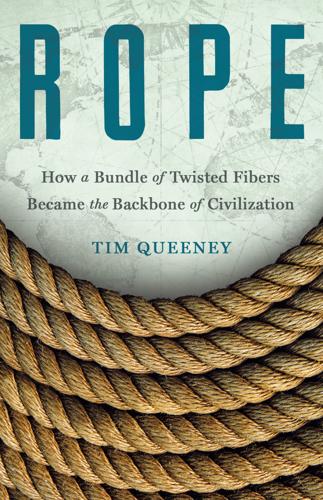
Rope: How a Bundle of Twisted Fibers Became the Backbone of Civilization
by
Tim Queeney
Published 11 Aug 2025
How to do that. How to belay, how to flake stuff off [lay out a coil on the floor so it runs freely]. How to do it safely.” My next stop was at the Studio 54 theater where I met with stagehand Tom Goehring and also John Martinez, who is head carpenter at the Schoenfeld Theatre. Unlike the new Perelman Center, where most of the lifting line is wire rope and the process is highly automated with electric motors and computerized controls, the Studio 54 Theater, which opened as the Gallo Opera House in 1927, still uses rope handlines for controlling the weighted arbors, which are still hauled up by hand.
…
We had a giant house down here for a show and it was the full width of the stage and about 10 feet deep. And there were about forty lines. So, we had forty lines coming out off of ten arbors. And it was about 18,000 pounds.” Later, Martinez walked me down the street to the Booth Theatre, where we met its head carpenter, Gabe Harris. The Booth is somewhere halfway between the older setup at Studio 54 and the up-to-date Perelman, which was completed in 2021. Gabe Harris emphasized that the Booth’s rigging runs on three-sixteenth aircraft-cable wire rope. “The majority of Broadway houses are still what we call hemp houses. And this was one of them. That is the old school way of doing the rigging.
…
Sixtus V, Pope skipping rope slack-rope performers slavery Smith, Andrew Solomon, Frank Solomon, King South Pole space elevator spelunkers spirituality. See religion and spirituality Stage Rigging Handbook (Glerum) Statius Steele, Bill Steiner, Stan Stephen, James Fitzjames Stone, Derek Stone, James Stone Age tools Stonehenge Streather, Tony Studio 54 Theater Sultan Hasan mosque and madrasa Supple, Harry Suzman, James Swan, Pete Taiwan Talbye, Dorthy tar Tarbuck, Ken Taugwalder, Peter telegraph cables theater Theseus Thirty Years from Home (Leech) Thompson, Frank Thompson, Nainoa tightrope artists Time To Reach the Clouds (Petit) torture.

Frommer's New York City Day by Day
by
Hilary Davidson
Published 6 Jan 2006
Al Hirschfeld 19 Gershwin 6 New Amsterdam 38 Ambassador 9 Helen Hayes 27 New Victory 37 American Airlines 41 Hilton Theatre 40 Palace 32 August Wilson Theater 4 Imperial 18 Plymouth 26 Belasco 35 John Golden 20 Richard Rogers 17 Biltmore 13 Longacre 12 Royale 24 Booth 29 Lunt-Fontanne 16 St. James 22 Broadhurst 23 Lyceum 34 Shubert 28 Broadway 3 Majestic 21 Studio 54 2 Brooks Atkinson 15 Marquis 31 Vivian Beaumont 1 Circle in the Square 8 Minskoff 30 Walter Kerr 11 Cort 33 Music Box 25 Winter Garden 7 Ethel Barrymore 14 Nederlander 39 Eugene O’Neill 10 Neil Simon 5 (Avenue of the Americas) 17 18 25 33 Duffy Square Shubert Alley 19 TKTS Booth W. 43rd St.
…
Royale. 242 W. 45th St. y 212/ y 212/239-6200. 239-6200. Plymouth. 236 W. 45th St. y 212/ Gershwin. 222 W. 51st St. y 212/ St. James. 246 W. 44th St. y 212/ 586-6510. 239-6200. Helen Hayes. 240 W. 44th St. Shubert. 225 W. 44th St. y 212/ y 212/944-9450. 239-6200. Hilton Theatre. 213 W. 42nd St., Studio 54. 254 W. 54th St. y 212/ y 212/307-4100. 719-1300. Imperial. 249 W. 45th St. y 212/ Vivian Beaumont. 150 W. 65th St. 239-6200. y 212/239-6200. John Golden. 252 W. 45th St. Walter Kerr. 219 W. 48th St. y 212/239-6200. y 212/239-6200. Longacre. 220 W. 48th St. y 212/ Winter Garden. 1634 Broadway. 239-6200.
…
Guggenheim Museum, 60 Soundwalk, 55 South Street Seaport, 46 South Street Seaport Museum, 46 Special events and festivals, 160 Spectator sports, 168 Standard Oil Company, 39 Stand-up comedy, 147 Staten Island Ferry, 4, 9 Statue of Liberty, 9, 45 Statue of Liberty Museum, 45 Steinhardt Conservatory (Brooklyn), 79 Stella McCartney, 31 Stettheimer Doll House, 53 Stone Street Historic District, 8, 57 The Strand, 43, 93 Strawberry Fields, 26–27 Studio 54 Theater, 148 Studiolo Gubbio, 33 Studio Museum in Harlem, 69 Subway, 163–164 wheelchair accessibility, 170 Sullivan, Louis, 35 Summer Film Festival (Bryant Park), 30 SummerStage, 160 Super Shuttle, 162 Sylvan Water (Green-Wood Cemetery), 106 Symphony Space, 143 T Takashimaya, 15, 29, 88, 94 Taxes, 168 Taxis, 162, 164 Teany, 86 Teitel Bros Grocery (the Bronx), 63 TeleCharge, 147, 169 Telephone, 168–169 Temperature, average, 161 Temple of Dendur (Metropolitan Museum of Art), 34 Ten Ren Tea, 84–85 Terence Conran Shop, 96 Terranova Bakery (the Bronx), 64 Theater, 140, 143, 148 reservations, 161 tickets, 147 Theresa Towers, 42 Ticketmaster, 147, 169 Tickets, 169 Ticketweb, 169 Tiffany & Co., 15, 29, 51, 97 Times Square, 49–50 Times Square Information Center, 163 Times Square Visitors Center, 167 Tipping, 169 Tír Na Nóg, 126, 132 Tisch Children’s Zoo, 103 TKTS, 147 Toilets, 169 The Tomb of the Soda Fountain King (Green-Wood Cemetery), 106 Tourist offices, 160, 169 Tours, 169.
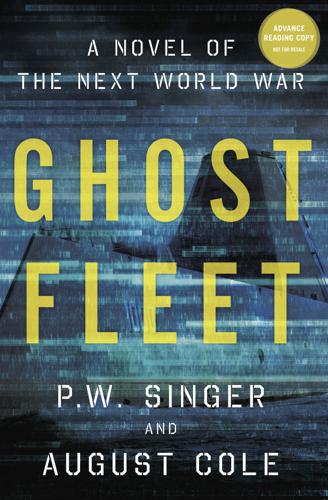
Ghost Fleet: A Novel of the Next World War
by
P. W. Singer
and
August Cole
Published 28 Jun 2015
The beach is known as one of the most dangerous surf spots on Oahu. 140 787-9 executive jet: “787 Dreamliner: Fact Sheet,” Boeing, accessed August 20, 2014, http://www.boeing.com/boeing/commercial/787family/787-9prod.page. 140 the Studio 54 nightclub: Sean O’Hare, “Inside Studio 54: Fascinating Photographs Reveal What Stars Really Got Up to in World’s Most Famous Nightclub,” Mail Online, January 17, 2013, accessed August 20, 2014, http://www.dailymail.co.uk/news/article-2263800/The-crazy-antics-Studio-54-revealed — pictures-just-stars-got-legendary-New-York-nightclub.html. 140 “A letter of marque”: “Marque and Reprisal,” Heritage Foundation, accessed August 20, 2014, http://www.heritage.org/constitution/#!
…
The harder he fought, the tighter the leash squeezed as wave after wave broke over him. JFK-Citigroup Airport, Queens, New York City “You want a letter of what?” Admiral Beyer didn’t like having to leave the Pentagon in the middle of a war. And he definitely did not like having to sit inside a 787-9 executive jet that had been done up like the Studio 54 nightclub from the 1970s. “A letter of marque, Admiral. My lawyers tell me I need one,” said Aeric Cavendish. He added, sotto voce, “I would have assumed a sailor would understand this from his naval history, but I guess not.” Admiral Beyer dug his fingernails into the seat’s brown velour.

They All Came to Barneys: A Personal History of the World's Greatest Store
by
Gene Pressman
Published 2 Sep 2025
“Tell him I’m not feeling well,” I’d say, trying to throw a little charm on it through a crushing hangover. “Tell him I had a long night.” I don’t think anyone was buying it. And it would get worse before it got better. 9 Seedy and Loving It 1977–1978 “Now is the summer of our discotheques,” punned a nightlife columnist in June 1977. That April, the most famous of them all, Studio 54 (just “Studio” to those who knew) opened, beginning what would be a short, never-to-be-replicated three-year run. I was there on opening night—and onward. Studio came to define the disco era, as much as Donna Summer or disco balls ever would. Its set pieces have become the stuff of legend—the crescent moon descending from the ceiling with a coke-spoon beneath its nose, Bianca Jagger riding into her birthday party that May on a coke-white horse—and its regulars are enshrined forever in the party pantheon.
…
Though Ian would go around swearing he didn’t know Steve was gay until shortly before his death from AIDS complications years later, I don’t know how anyone would’ve missed it; and there was certainly no missing his prodigious appetite for drugs. It made him reckless, and Studio’s spot on top of the world made him feel invincible. Steve and Ian became an object lesson in the old truism that loose lips sink ships. All the attention had gone to his head, and he bragged to New York magazine that Studio 54 was making more money than the Mafia. That’s probably what sent the feds in. I had heard rumors of garbage bags of cash being carted around, but no one seemed to mind when their noses weren’t getting rubbed in it. But Steve couldn’t help himself. His lawyer, the notorious McCarthyite Roy Cohn—himself a Studio regular; you’d always see him on those hanger-on couches for celebrity entourages—probably didn’t help matters much, either.
…
But by the beginning of 1980, when the city’s largest rink, the Roxy, opened due west of Barneys in a former trucking warehouse at 515 West Eighteenth Street, the trend seemed to be all but confirmed. “People who said they’d never do it, they’re doing it,” one proprietor told The New York Times that year. The Roxy was popularly known as “the Studio 54 of skating,” even if, as its owner told Women’s Wear Daily, “disco is dead.” We ended up throwing a big party for David Hockney there, “David’s Evening on Wheels”—one he only showed up to well after midnight. We even put on a fashion show on skates, which was a riot—less the show itself, and more beforehand, when we auditioned models and had people rolling through the store.
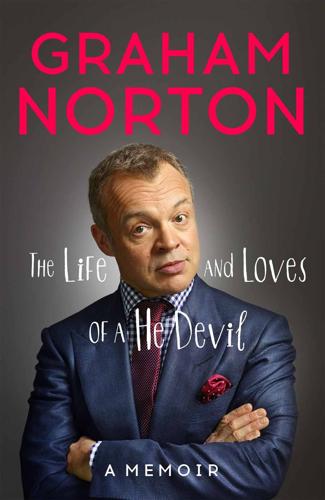
The Life and Loves of a He Devil: A Memoir
by
Graham Norton
Published 22 Oct 2014
Dressed up in the smart jackets that we’d just bought that day, we enjoyed fabulous food and wine with a side dish of spectacular plastic surgery on display. I had arranged to meet my friend, Eddie, for a Saturday night drink afterwards. As I left the restaurant he texted me to say that we were going to meet in Alan Cumming’s dressing room at Studio 54, where he had just begun previews of the musical, Cabaret. I adore Alan so was thrilled to get the chance to hang out with him. When I got to the top of the narrow backstage staircase, the room was thronged with well-wishers and friends. I knew most of them and, randomly, Matthew Morrison from Glee was amongst the crowd.
…
Off course we thought the whole idea of going to this wedding was hysterical, but we were also undeniably excited. We got to the church with time to spare and found some seats. We opted for the balcony where we could get a good, uninterrupted view of the who’s who of show business that had shown up. Liza has connections going back to her mother’s time in Hollywood right up to Studio 54 and beyond, while David came from the world of pop music. Lauren Bacall, David Hasselhoff, Michael Douglas, Elaine Paige … the guest list could best be described as eclectic. The headline acts were Elizabeth Taylor as matron of honour and Michael Jackson as best man. The whole thing was like one of those Agatha Christie movies where they just round up as many famous people as possible and start filming.
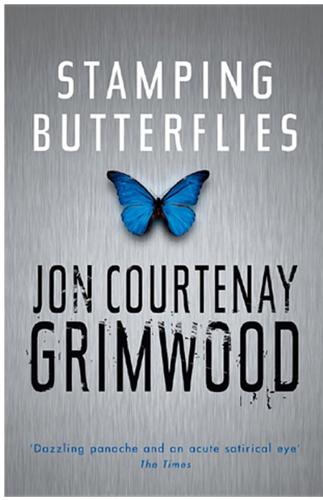
Stamping Butterflies
by
Jon Courtenay Grimwood
Published 1 Jan 2004
A very detailed diary obviously. Names and places, dates, bribes paid... And I can tell you," he added, "most of it makes Saturday night at Studio 54 look like my first day at Montessori." Neither Jake nor Celia had ever been to Studio 54, obviously enough. He hung out at CBGB, a club in the Bowery situated below a flop-house. He was talking, however, not just to the Arab police officer but to de Greuze and the Frenchman could be relied upon to know of Studio 54, in a way he might not of a club where at least one person was reputed to have jacked off in the chilli, the bartender often forgot to change the beer and the whole place stank of piss.
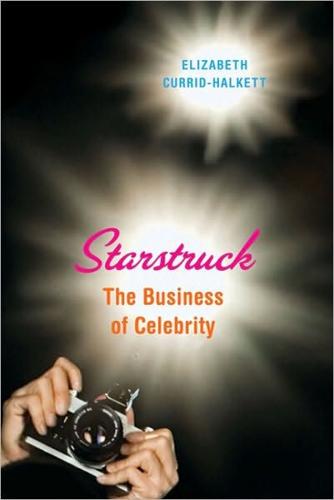
Starstruck: The Business of Celebrity
by
Currid
Published 9 Nov 2010
They may have painted portraits of famous people, but the mainstream media and public did not celebrate them as stars. In the 1950s, however, the Abstract Expressionists had a general public who recognized and was fascinated by their lives.30 By the 1980s, Andy Warhol and his crew of pop artists were genuine celebrities, hanging out at Studio 54 with Mick Jagger and David Bowie, and being written up by columnists everywhere.31 It was Warhol himself who said, “Don’t pay any attention to what they write about you, just measure it in inches.” Since the late 1980s, however, American visual artists’ relative-celebrity currency exchange with mainstream stardom has decreased.
…
Sontag, Susan Sotheby’s South Beach (Florida) Southern California, University of South Korea South Park (TV show) So You Think You Can Dance (TV show) Spears, Britney; bad behavior of; celebrity residual of; comments on blog postings on,; economic impact of; paparazzi and; volume of media mentions of Spears, Jamie Lynn Spice Girls; see also Beckham, Victoria Spielberg, Steven Spitzer, Eliot sports; celebrity residual in; networks in; relative celebrity in; see also baseball; football; soccer Sports Illustrated Sports Network SPPS Clementine Springsteen, Bruce Stallabrass, Julian Staller, Ilona (Cicciolina) Starbucks starlets Starr, Freddie Starr, Ringo Star Search (TV show) Star Trek TV shows and movies Stiller, Ben Streep, Meryl Stuckism art movement Studdard, Ruben Studio 54 (New York) Style Rookie subcultures Submission (film) Sudan Summers, Harvard Sun (tabloid) Sun Country Classic Sundance Film Festival Sunday Times supermodels superstar effect Surowiecki, James Sutton, Willie Szymanski, Stefan tabloids; American Idol winners in; Aniston in; bad behavior coverage in; British; covers; events covered by; Hilton in; Indian; paparazzi and; publicists and; sports stars in; superstar effect and; among top two hundred best selling magazines talent; in art world; celebrity residual versus; geography of stardom and; networks and; relative celebrity and; Star Currency and Talese, Gay Talley, André Leon Target stores Tate Modern (London) Tatler magazine Tavistock Group Taylor, Elizabeth Teixeira, Mark Teller, Juergen Tequila, Tila Texas Rangers Thakoon fashion house Thousand Years, A (Hirst) Timberlake, Justin Tipping Point, The (Gladwell) TLC TMZ Tokyo; World Cup in Tonight Show, The Topshop Torre, Joe Torvalds, Linus Total Request Live (TRL) trainers Transformers (film) Treasury bonds TriBeCa Film Festival Tron (film) Tron Guy Trump, Donald Trump, Melania Tucker, Ken Turner, Graeme Turner Prize Tussaud, Madame (Marie Grosholtz) Twentieth Century-Fox Twilight Saga films Twitter Underwood, Carrie Ungaro Union Square Cafe (New York) United Kingdom; art scene in; awards shows in; fantasy war games in; film premiers in; political elite in; press in; publicists in; reality TV in; sports celebrities in; see also London United Talent Agency Universal Pictures Urban Decay US Weekly; casual shots of stars in; circulation of; endorsement deals announced in; mentions of Winslet versus Aniston in U2 Vaccaro, Sonny Van Gogh, Theo Vanity Fair magazine; Oscar party hosted by Vaughn, Vince Verardi, Vincenzo VH1 Vicious, Sid Viper Room (Los Angeles) Virgin brand Vogue magazine; online Voltaire von Furstenberg, Diane Von Teese, Dita Walker, Kara Walk of Fame (Hollywood) Wallace, David Foster Wall Street Journal Wal-Mart Warhammer Warhol, Andy Warhol Economy, The (Currid-Halkett) Washington, D.C.
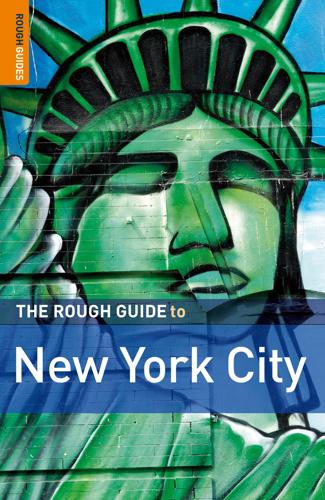
The Rough Guide to New York City
by
Martin Dunford
Published 2 Jan 2009
The look is casual but sleek, featuring uncluttered wood with blue accents, and the food good (as you might expect from a French-owned establishment). $269 Paramount 235 W 46th St, between Broadway and Eighth Ave T 212/764-5500, Wwww .nycparamount.com. A former budget hotel renovated into a boutique bolt-hole by Ian Schrager (co-founder of Studio 54), the Paramount offers chic, closet-sized rooms. It also boasts a trendy (and sometimes raucous) bar. $279 Park Savoy 158 W 58th St, between Sixth and Seventh aves T212/245-5755, Wwww.parksavoyhotel.com. Despite a somewhat chilly desk staff, the Park Savoy with its cozy rooms (all with private bath) is just a block from Central Park, which makes this hotel great value for the area. $185 The Plaza Fifth Ave at Central Park South T212/759-3000, Wwww.theplaza.com.
…
The city’s slow reversal of fortunes coincided with the completion of two face-saving building projects: the former World Trade Center was a gesture of confidence by the Port Authority of New York and New Jersey, which financed it; and the 1977 construction of the Citicorp Center added modernity and prestige to its environs on Lexington Avenue. The era is also renowned for its raucous nightlife: starting in the mid-1970s, singles bars sprang up all over the city, gay bars proliferated in the Village, and disco was king. The impossible-toget-into Studio 54 was an internationally known hotspot, where drugs and illicit sex were the main events off the dance floor. The real-estate and stock markets boomed during the 1980s, ushering in another era of Big Money; fortunes were made and lost overnight and big Wall Street names, like Michael Milken, were thrown in jail for insider trading.
…
Flashing back to the early life of Vito Corleone, Coppola’s great sequel recreated the Italian immigrant experience at the turn of the century, portraying Corleone quarantined at Ellis Island and growing up tough on the meticulously recreated streets of Little Italy. 448 The Last Days of Disco (Whit Stillman, 1998). About the most unlikely setting for Stillman’s brand of square WASPy talkfests would be the bombastic glittery bacchanals that were Studio 54 in its late-1970s heyday, which is what makes this far more enjoyable than the same season’s overly literal and melodramatic 54 (Mark Christopher, 1998). Little Fugitive (Morris Engel and Ruth Orkin, 1953). A Brooklyn 7year-old, tricked into believing he has killed his older brother, takes flight to Coney Island where he spends a day and a night indulging in all its previously forbidden pleasures.
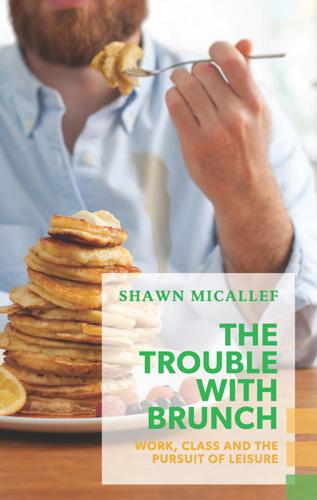
The Trouble With Brunch: Work, Class and the Pursuit of Leisure
by
Shawn Micallef
Published 10 Jun 2014
‘A lot of people who don’t have a lot of disposable income will choose to use what they do have on brunch, just to feel like, “On my day off, I can dabble in this lifestyle.” It’s not unlike working-class people spending a lot of money to go to expensive and flashy nightclubs with overpriced drinks and a high cover charge in order to experience a Studio 54–like glamour. It’s telling that so many of the dance and house anthems played at these kinds of clubs are all about liberation, forgetting one’s troubles and leaving the drudgery behind. Aesthetically speaking, Aunties & Uncles is closer to a diner, albeit a bohemian version, than a trendy brunch place, so when I ask Popowich to describe what makes a brunch ‘brunch’ and not breakfast or lunch, her answer is surprising.

The Rough Guide to Prague
by
Humphreys, Rob
PAVLOVA U kalicha VU KE KARLO P LAV ECK Á NÁ Zahrada BE VJ es la s Sq 35 r ua GL ICK Á RUMU AN 11 NSKÁ Á BR US E L SK HŘ S A R A J EV SK Á 6 11 ZÁ EB SK Á 4 22 10 16 RESTAURANTS Celeste Červená tabulka K A RY Cicala SA MA Činská restaurace NA JA po sečuánsku Dynamo Francouzská restaurace Hybernia Lemon Leaf Modrý zub Pizza Nuova Pizzeria Kmotra Plzeňská restaurace Posezení u Čiriny Siam Orchid Střelecký ostrov U sádlů Zahrada v opeře Žofín Garden Zvonice NÁMĚSTÍ MÍRU PUBS & BARS American Bar Billiard Centrum Branický sklípek Bredovský dvůr Novoměstský pivovar Pivovarksý dům Potrefená husa U bubeníčků U Fleků U havrana U kruhu U Pinkasů Zlatá hvězda V I N O H R A D Y e VA 21 Emauzy I Minerva Girls' School 4 54 Former Jesuit College sv Ignác U NEMOCNICE sv Jan Nepomucký na skalce 3 NAVRÁTILOVA 24 36 9 43 ŘEZNICKÁ JE ČN Á V LAD ISL- Faustův dům Náměstí Karlovo radnice KÁ 14 S O K O L S KÁ 17 KARLOVO NÁMĚSTÍ ADS TROJICKÁ I SKÁ ÁN MOR JENŠTEJN RESSLOVA sv Cyril & Metoděj NA LA ZA RS Diamant 32 41 Novoměstská KÁ U LOV 55 VA L ÍK O 47 CI EN K BOŘ Z 44 V IC AT O 39 OP H ŘÍC 34 40 M YS Palacký monument KARLOVO NÁMĚSTÍ PALACKÉHO NÁM. 7 53 VOJTĚŠSKÁ Hlahol 38 CHÁ VS KÁ EHR L E G E R O VA 200 m PALACKÉH Boat launch M OS T JI RÁ SK ŮV Mánes Žofín 37 V JIR VINIČNÁ POD N U SE L S KÝ MI 0 CAFÉS Albio 5 Archa 7 Café 35 42 Caféterapie 55 Dahab 4 Dobrá čajovna 17 4, 7, 10, 14 Globe 44 Grand Hotel Evropa F Hájek 9 Imperial A Louvre 21 Lucerna 25 Marathon 41 Millhouse Sushi – Kaitan 13 Obecní dům 10 St Tropez 28 Shabu 26 Slavia 23 Tramvaj 22 U Góvindy 1 U sv Vojtěcha 38 Velryba 32 CLUBS & VENUES JampaDampa 50 27 Lucerna 24 N 11 39 Nebe 21 Reduta 12 Studio 54 46 U Rudolfa MALÁT VO DN Í PET ŘÍN SKÁ MASARYKOVO NÁBŘ. Goethe Institut 33 SKÁ PÁ N ŠTĚ Slovanský ostrov KÁ M Ě LNI C K Á VYŠ Ř ÍK O V SKÁ RAN MEZIB A OV KÁCH VE SM EČ KAR SKÁ KÁ ŠAFA DS RAŠÍNOVO NÁBŘ. LAŇ SKÁ RA Á ŠK O L SK NSKÁ Š T Ě PÁ VÁ L IP O KÁ SKÁ KRA KOV TI ŠP AN ĚL SK Á A OV ER LUB DÝN Y ŠE H GORA ZDOVA INS H O VA KE KA TE Ř D ITRIC JIŠ NÁP L AV N Í VÁ C LA BO N A ZD E R AZE NA M AT O U Š O V A BA SOVA LB ÍN PŠTROS A LS COV I TA MEN KÁ LON KÁ | KŘE Á RADS B E LG IC VS ŠA NOV É M Ě S TO NÁBŘ.
…
Sedm vlků (Seven Wolves) Vlkova 7, Žižkov W www.sedmvlku.cz; tram #5, #9 or #26 from metro náměstí Republiky to Husinecká; see map, p.134. Club-bar with a penchant for reggae, hard house, techno and drum ’n’ bass whose resident DJs make the most of the impressive sound system. No cover charge. Mon–Sat 5pm–3am. Studio 54 Hybernská 38, Nové Město; metro Náměstí Republiky; see map, p.112. This late-late dance venue is a useful place to know about if you want the night to continue well into the early hours. Cover charge 100Kč. Thurs 5am–9am, Sat & Sun 5am–1pm. Kongresové centrum Praha (Prague Congress Centre) 5 května 65, Vyšehrad W www.kcp.cz; metro Vyšehrad; see map, p.134.
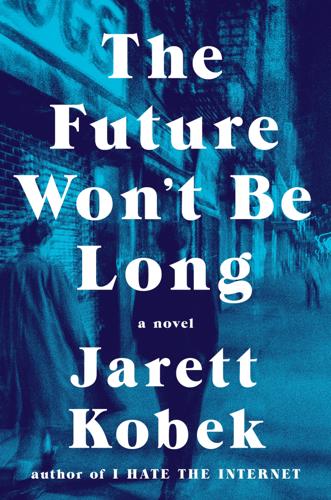
The Future Won't Be Long
by
Jarett Kobek
Published 15 Aug 2017
Baby ended up downstairs, looking at exposed piping and the empty dance floor, which was covered in sand. Still early. People would be arriving until 8 am. Emptiness of the basement, the emptiness of an occupied storefront, giving drug clarity into the nature of the 1980s. A difference from the era of true disco and Studio 54, when proprietors would transform their spaces into works of wonder. Then the idea had been to pull people from their minds, transport them to other worlds. Save the Robots, The World, Tunnel, Mars, Red Zone, Limelight. Consciously designed to keep the remnants and echoes of their earlier occupants.
…
Crisp’d written a book called The Naked Civil Servant, a memoir of his life as a flame queen in London around the time of World War II. Through the machinations of fate, he’d ended up as the club scene’s elder statesman. Baby and Crisp spoke for the better part of an hour. —Do you know, you charming boy, said Crisp, that in the days of Studio 54, the great-grandson of Abraham Lincoln would come up on the train from Virginia to partake in the sheer excess? It’s absolutely true. I’ve had it from multiple sources. His name was Robert Todd Lincoln Beckwith, but they called him Bud. Bud! Bud Lincoln! Isn’t it charming? He was a terrible old man with a degenerative disease of the muscles that left him quite incapable of walking.
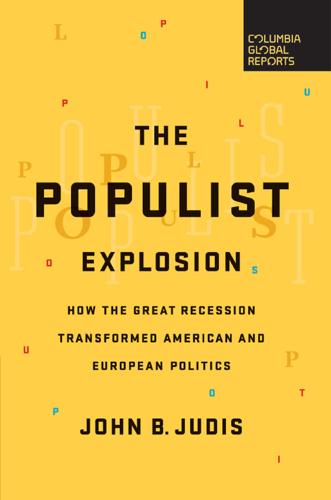
The Populist Explosion: How the Great Recession Transformed American and European Politics
by
John B. Judis
Published 11 Sep 2016
But Tom Watson had also been a wealthy landowner and Ross Perot was also a billionaire. What’s important is that Trump, like the Texarkana-born Perot, wasn’t a perfect fit for upper class America. He was still the boy from Queens who aspired to live on the Upper East Side, but ended up spending his time at demimonde hangouts like Studio 54 rather than the Harvard Club. Trump’s view of his social class was also influenced by Roger Stone. Stone had gotten his start in politics doing dirty tricks for Nixon’s 1972 campaign. Like Trump, he was a moderate Republican on issues like abortion and social spending—he and his first wife founded Republicans for Choice—but he liked to frame campaigns in frankly populist terms of “we the people” vs. the special interests.
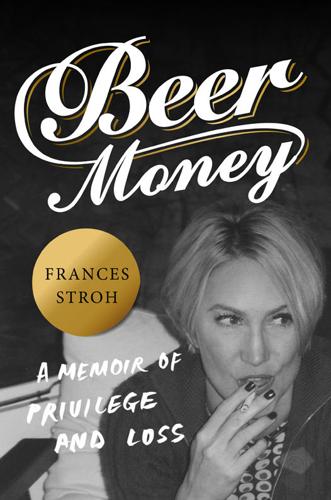
Beer Money: A Memoir of Privilege and Loss
by
Frances Stroh
Published 2 May 2016
I’d internalized both somehow, so that spending became just one more naughty thing I could do. Fifteen-year-olds with pockets full of cash, we felt as if we owned the damn city. We dressed up and went out to Upper East Side bars, practicing our classroom French on the bartenders, ordering martinis. We took cabs downtown, had dinner at John’s Pizza in the Village, and danced at Studio 54 or Danceteria, flashing the bouncers our fake college IDs, procured at Playland on Forty-Second Street. We bought pot in Washington Square Park to take back to whichever apartment we happened to be crashing in, and if no one was selling the good stuff, we called Choo-Choo. Choo-Choo brought the drugs to your building, uptown or downtown, like a train carrying precious cargo.
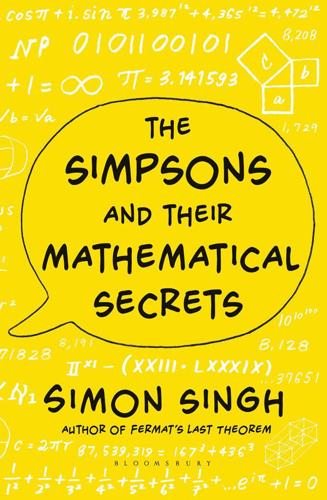
The Simpsons and Their Mathematical Secrets
by
Simon Singh
Published 29 Oct 2013
This freeze-frame gag was possibly inspired by an old joke about discrete mathematics: Q: What do you call a mathematician who has lots of romantic liaisons, but who doesn’t like to talk about it? A: A discrete data. Other Futurama freeze-frame gags relate to signs, such as the one at Studio 1²2¹3³ in “Rebirth” (2010). If we work out the result, then 1²2¹3³ = 1 × 2 × 27 = 54, so this is a reference to Studio 54, the famous 1970s New York nightclub. Similarly, we glimpse a sign that reads “Historic √66” (instead of “Historic Route 66”) in “Parasites Lost” (2001), and there is the irrationally named πth Avenue in “Future Stock” (2002). Although it is tempting to look at all these mathematical quips and consider them superficial, in many instances the writers have thought long and hard about the underlying ideas.
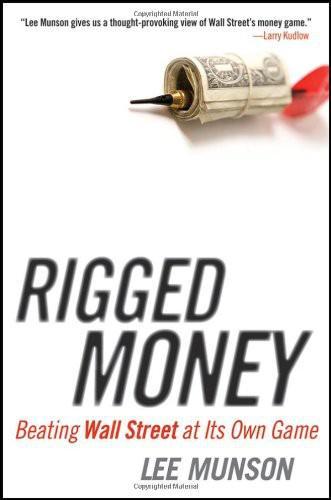
Rigged Money: Beating Wall Street at Its Own Game
by
Lee Munson
Published 6 Dec 2011
Knight Rider Crashes After avoiding the horror of the 1970s stock market gyrations it seems like the worst may be over. While inflation is at a fever pitch, the market returned more than 18 percent in 1979. You inherit money from a rich uncle that made his fortune selling disco albums before an untimely death on the dance floor of Studio 54. It’s 1980, the market is still cheap, and you have $40,000, so you buy an index fund that tracks the S&P 500. Five years later you have more than doubled your money with $103,000 in your account. You think about spending the money. How about buying a 1985 Pontiac Trans Am so you can pretend you’re David Hasselhoff driving around KITT, the famous talking car from the 1980s TV series Knight Rider?
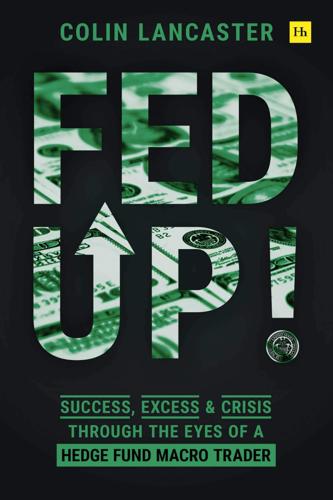
Fed Up!: Success, Excess and Crisis Through the Eyes of a Hedge Fund Macro Trader
by
Colin Lancaster
Published 3 May 2021
Fewer and fewer take more and more. Most people are taking a step backward. They try to create the illusion that it’s not happening, that they’re actually moving forward, sort of like a Michael Jackson moonwalk. But the facts don’t lie. And the guys at the top are all trained assassins. No more time to be all coked up at Studio 54. They have trainers, psychologists, meditation coaches, anything to increase their edge. And they all have another trait in common. They’re paranoid about failure, paranoid it will all go away, and they don’t have enough. No matter how much they have, they don’t think it’s enough to pay their bills.
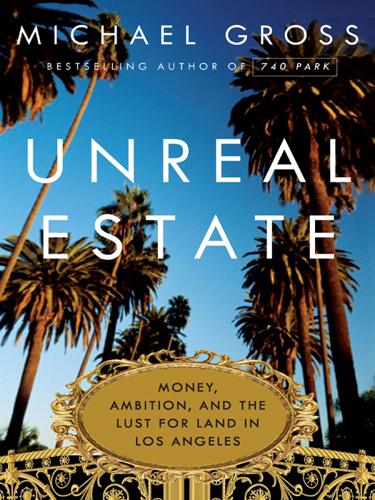
Unreal Estate: Money, Ambition, and the Lust for Land in Los Angeles
by
Michael Gross
Published 1 Nov 2011
Barth on a rented Gulfstream II with the girl-finder and half a dozen models; he made Page Six when one of the girls allegedly jumped ship in favor of a neighboring boatload of Mexican moguls, and was sent back to Miami in punishment. The next year, the New York Times was back to cover Ted again, lauding his parties where “the ratio of women to men is usually about two to one.” Field had rented Studio 54 for New Year’s Eve and recreated it in its heyday for a night—though the “B list of boldfacers” the Times said Field attracted might not have passed Steve Rubell’s muster. Field, then forty-seven, Monique P. Yazigi wrote, was “a huggy-bear figure” who spent the night on a black leather couch “where he was surrounded by five women who looked to be 18 to 23” and embodied “a cross between impeccable, preppy manners and studied contrariness.”
…
Legend: The Life and Death of Marilyn Monroe. New York: Stein & Day, 1984. Guinn, James Miller. A History of California. Volume II. Los Angeles: Historic Record Company, 1915. Hack, Richard. Hughes: The Private Diaries, Memos, and Letters. Beverly Hills, CA: Phoenix, 2007. Haden-Guest, Anthony. The Last Party: Studio 54, Disco, and the Culture of the Night. New York: William Morrow, 1997. Halberstam, David. The Powers That Be, Within the Kingdom of the Media. New York: Alfred A. Knopf, 1979. Havill, Adrian. The Last Mogul: The Unauthorized Biography of Jack Kent Cooke. New York: St. Martin’s Press, 1992. Herzog, Arthur.
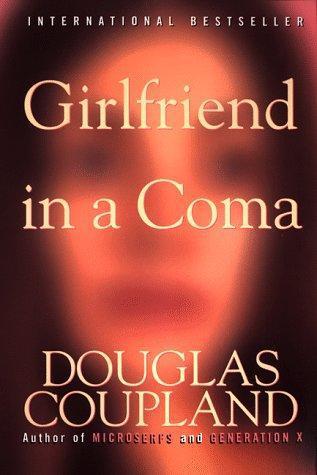
Girlfriend in a coma
by
Douglas Coupland
Published 19 Feb 1998
"Well I'm not going anywhere with these chopstick legs of mine. I feel like one of those glass birds that dips its beak into a glass of water. By the way, if you go in to see the others, Hamilton and Pam are going to drive you nuts.They spend their days shooting up and watching biography videos about the Duchess of Windsor, Studio 54, and Hollywood stars. They're losing themselves back in time. They talk all crazy." "I can handle it." "Hey Jared, you haven't answered many of my questions. Don't go. Quick, tell me, what's the deal? What happens next? Ten more years of this? Twenty? Thirty?" "I can't answer that, Karen. You know how the deal works."
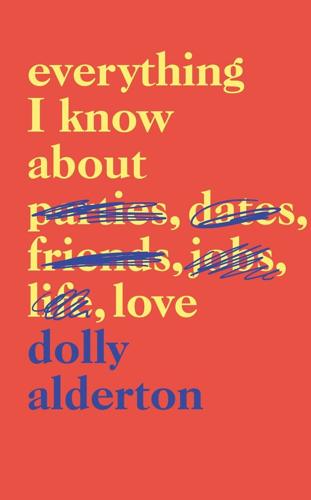
Everything I Know About Love
by
Dolly Alderton
Published 1 Feb 2018
They asked if we fancied heading to their friend Rodney’s house, who they assured us was ‘a party boy’ – the universal euphemism for ‘generous with his alcohol and drugs’. We all piled into their car waiting outside and their driver took us to a tower block on Edgware Road, which was far from the Studio 54 promise of excess and glamour we had been sold. Hicks and I held hands as we walked to the entrance, and in the lift I sent Farly a text with the address of where we were in case anything happened to me that night, a rather morbid ritual she had got quite used to. A Cypriot man in his mid-seventies wearing stripy pyjamas opened the door.
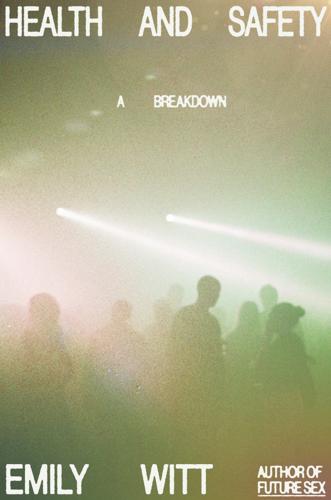
Health and Safety: A Breakdown
by
Emily Witt
Published 16 Sep 2024
Mancuso played the records and orchestrated the party’s vibe, whose progression he modeled after the three Bardos described in The Psychedelic Experience: A Manual Based on the Tibetan Book of the Dead by Ralph Metzner, Richard Alpert, and Timothy Leary: a calm that led to a frenzy and then a catharsis. The music was predominantly by Black artists—not techno, which had not yet been invented, but soul, R&B, and disco. As the seventies progressed, and money flowed into discotheques like Studio 54, the Loft kept serving a crowd seeking a purer, more spiritual experience of dance, who shared an understanding that exclusivity and celebrity came with economic discrimination (there was a difference between the Loft’s membership system, which was free, and helped keep a dance floor of queer, Black, and Latino people who might be using illegal drugs safe from cops and bigots, and a door oriented toward bringing in money and famous people).
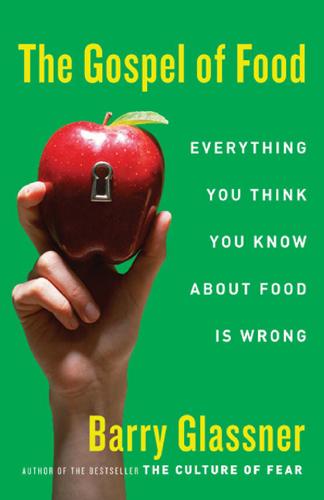
The Gospel of Food: Everything You Think You Know About Food Is Wrong
by
Barry Glassner
Published 15 Feb 2007
Some of Nieporent’s places—Montrachet, Nobu, Rubicon, Tribeca Grill—have served top-notch food, at least during some periods of their existence. But much of the time, Nieporent’s empire thrives on buzz and exclusivity; people come to satisfy their egos as much as their palates.15 “It is like when you used to be able to get into Studio 54. It made you feel like you had status, you were part of an elite group,” Nieporent told me over lunch at Tribeca Grill. Several of the most successful restaurateurs have maintained that, in Los Angeles Magazine food critic Patric Kuh’s words, “the best way to get people in is to plant in their minds the idea they might not be able to.”16 Restaurant Heaven 101 At our lunch, Nieporent ate a dish identified on the menu as “Drew’s Salmon,” a grilled fish on a salad of arugula and white beans, while I ate “Spice Rubbed Tuna,” an entrée markedly more bland than its name implied, and listened to Nieporent explain what he referred to as “the seating order” at popular restaurants.
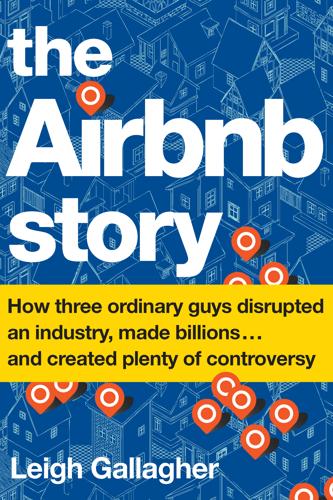
The Airbnb Story: How Three Ordinary Guys Disrupted an Industry, Made Billions...and Created Plenty of Controversy
by
Leigh Gallagher
Published 14 Feb 2017
In the 1960s, a few entrepreneurs in Europe came up with a novel idea that merged leisure travel with the burgeoning interest in owning real estate: the notion that you could buy a piece of property as a “right to use” instead of outright and that, in this way, your vacation would be something you “owned” instead of rented. This new model caught on and soon spread to the United States; the modern-day time-share industry was born; and, after some time, the big hotel brands entered the market. In 1984, Ian Schrager and his business partner in Studio 54, Steve Rubell, introduced a new hotel concept when they converted an old building on Madison Avenue and opened the Morgans Hotel in New York. Focusing on design and social spaces above all else, the hotel drew a chic crowd and quickly became a “scene.” On the West Coast, Bill Kimpton had pioneered a similar concept with Kimpton Hotels, converting unique properties into small hotels with a focus on design and the atmosphere of the public spaces.
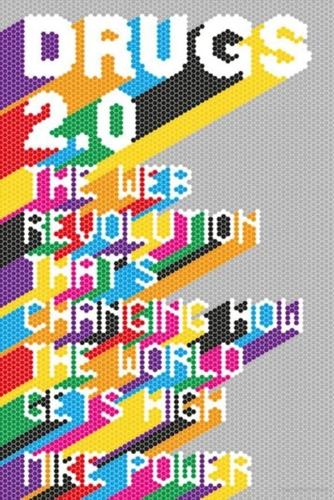
Drugs 2.0: The Web Revolution That's Changing How the World Gets High
by
Mike Power
Published 1 May 2013
From the late 1970s until the late 1980s, other than a brief and ruinous flirtation with heroin in the latter decade, Britain’s drug scene was restricted to this limited chemical palette of uppers and downers, acid and hash, and cocaine for the wealthy. Cocaine had first become widely popular in America in its powdered form in the 1970s, and was ubiquitous among musicians and the wealthy as the acid daze came to an end. Discos of the era, such as New York’s glamorous Studio 54, were packed with prancing celebrities with pristinely powdered noses, while the far funkier Loft, run by DJ David Mancuso, took dancers on an all-night journey into the light in a ritualized, almost ceremonial urban setting where LSD was the favoured intoxicant. For all their differences, the contexts in which these drugs were taken, though, were similar – polysexual, multi-racial, music-driven.
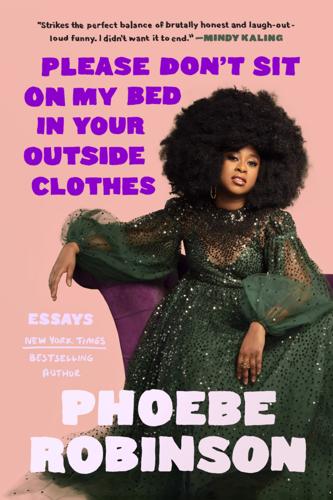
Please Don't Sit on My Bed in Your Outside Clothes: Essays
by
Phoebe Robinson
Published 14 Oct 2021
This is the kind of name that lets you know they’re “Before I Let Go” purists and will only rock out to the original Frankie Beverly and Maze version. Secondly, it’s a wine train, not a “sip lukewarm water and snack on dry-ass pretzel sticks while sitting on your Wayfair couch” train. Every car on a wine train, at the bare minimum, should be noisy and messy like Studio 54 in its heyday: people loudly having a good time, sequins everywhere, and a nipple slip from Grace Jones. Okay, okay. Look, I understand that people being loud in a public setting can be irritating. However, in a world that wants to embarrass, shame, or criminalize Black women for not operating within the confines of stereotypes—jezebel or strong/angry—I find it deliciously defiant and, more important, necessary for Black women to show public displays of happiness.
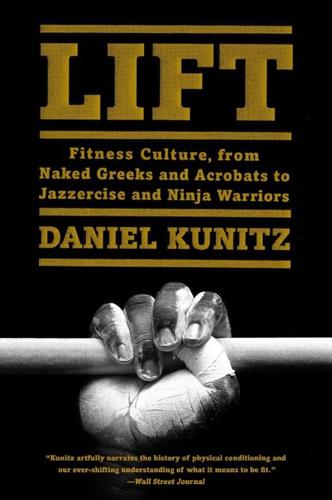
Lift: Fitness Culture, From Naked Greeks and Acrobats to Jazzercise and Ninja Warriors
by
Daniel Kunitz
Published 4 Jul 2016
As it became apparent that “what the singles bars were to the 1970’s, the high-tech physical fitness parlors are to the 1980’s,” as the New York Times reported, health club businesses began multiplying like beads of sweat on an overheated brow. In an article titled “The Mating Game and Other Exercises at the Vertical Club,” the newspaper likened New York’s most popular gym to “today’s Studio 54.” Rolling Stone magazine dedicated an entire series of articles to the dating scene at the Sports Connection in Los Angeles, which became the basis of the 1985 film Perfect (a flop starring John Travolta and Jamie Lee Curtis, the latter as an aerobics instructor). Weider Publications brought out a monthly in 1981, Shape, to capitalize on the new women’s fitness market, and it too touted health clubs as a place to meet like-minded, fit-bodied men.
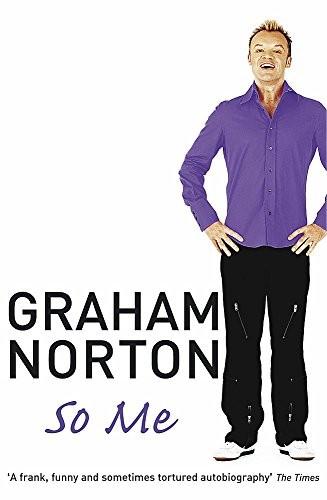
So Me
by
Graham Norton
Published 2 Jan 2005
I found a small one-bedroom place near Columbia Road flower market in the East End. When I say small, I really am not exaggerating. They had created a one-bedroom flat from a room that would have been described as ‘a bit cramped’ in the property section of the Toy Town Gazette. The hallway looked like a mini Studio 54, while the bathroom and kitchen both looked like ads for Flash cleaning powder circa 1972 – Avocado and Donkey Brown respectively – but for ninety pounds a week I could live alone and in Zone 1. My friend Nicola helped me move, but I’m ashamed to admit that I left most of my belongings behind. I just shut the door on my bed, desk, sofa, clothes and books.
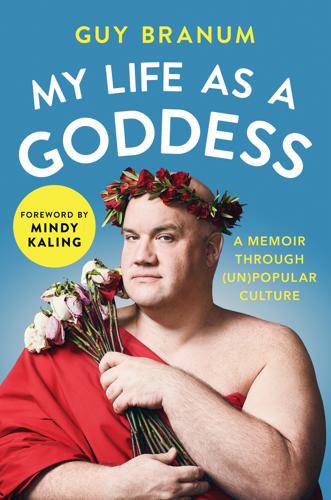
My Life as a Goddess: A Memoir Through (Un)Popular Culture
by
Guy Branum
Published 29 Jul 2018
We’re supposed to be unsettled by her contribution to the carnivalesque atmosphere—shouldn’t this grandma be at home, baking blondies? Then we transition to pathos as she dies of an overdose on the dance floor in the arms of our white, male, heterosexual protagonist. This is propaganda. Disco Dottie was based on an actual patron of Studio 54, seventy-seven-year-old attorney Sally Lippman. “Disco Sally,” as she was known, found the club not long after her husband’s death and began frequenting it. A beloved fixture, celebrities waited turns to dance with her, and she found a new boyfriend, a twenty-six-year-old she called her “Greek god.”
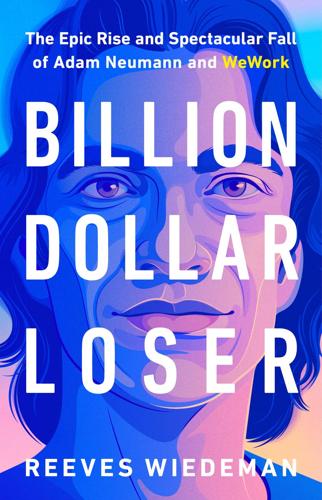
Billion Dollar Loser: The Epic Rise and Spectacular Fall of Adam Neumann and WeWork
by
Reeves Wiedeman
Published 19 Oct 2020
Rowe Price, Goldman Sachs—Adam had been joined by Michael Gross, who replaced Ariel Tiger, Adam’s navy buddy, as WeWork’s CFO at the end of 2013. Gross knew Rebekah from childhood, and from college at Cornell. He had spent much of the 2000s in finance; in 2011, after his private equity firm invested in Morgans Hotels, a boutique chain run by Studio 54 founder Ian Schrager, Gross was installed as CEO. WeWork had talked with Morgans about building a music-themed space—WeRock—at one of its New York hotels. Gross was blond and boyish, and moved naturally within New York’s elite circles, swimming laps with investment bankers at the New York Athletic Club on Central Park South.
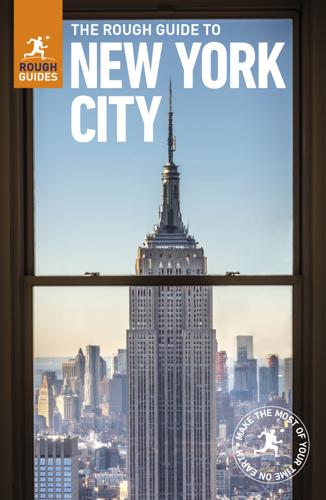
The Rough Guide to New York City
by
Rough Guides
Published 21 May 2018
The city’s slow reversal of fortunes coincided with the completion of two face-saving building projects: the former World Trade Center was a gesture of confidence by the Port Authority of New York and New Jersey, which financed it; and the 1977 construction of the Citicorp (now Citigroup) Center added modernity and prestige to its environs on Lexington Avenue. Meanwhile, the raucous nightlife scene that started in the mid-1970s was best exemplified by hotspot Studio 54, where drugs and illicit sex were the main events off the dancefloor. The real-estate and stock markets boomed during the 1980s, ushering in another era of Big Money. A spate of construction gave the city more eye-catching, though not necessarily well-loved, architecture, notably Battery Park City, and master builder Donald Trump provided glitzy housing for the super-wealthy.
…
A young couple try to make it in the big city but are swallowed up and spat out by the capitalist machine. A bleak vision of New York in the 1920s, and one of the great silent films. The Last Days of Disco (Whit Stillman, 1998). About the most unlikely setting for Stillman’s brand of square WASPy talkfests would be the bombastic glittery bacchanals that were Studio 54 in its late-1970s heyday, which is what makes this far more enjoyable than the same season’s overly literal and melodramatic 54 (Mark Christopher, 1998). Radio Days (Woody Allen, 1987). Woody contrasts reminiscences of his loud, vulgar family in 1940s Rockaway with reveries of the golden days of radio and the glamour of Times Square.
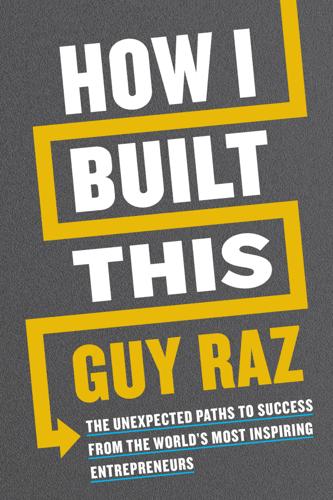
How I Built This: The Unexpected Paths to Success From the World's Most Inspiring Entrepreneurs
by
Guy Raz
Published 14 Sep 2020
And before you know it, these guys were walking billboards.” But these were not your run-of-the-mill bouncers or bodyguards. They were not just ID checkers or crowd control managers. These guys were glued to the hips of rap artists who were redefining American pop culture. They were the gatekeepers of what were becoming the hottest clubs in New York—the Studio 54s of their generation. Which meant, when outfitted in gear provided directly from Daymond, each one was the living, breathing equivalent of a Times Square billboard for FUBU. One that managed to get the attention of Ralph McDaniels, the influential co-founder of the iconic New York public access TV show Video Music Box, which had been responsible for breaking nearly every single hip-hop artist on the East Coast as far back as 1983.

Human Frontiers: The Future of Big Ideas in an Age of Small Thinking
by
Michael Bhaskar
Published 2 Nov 2021
Brian Eno calls it ‘scenius . . . the communal form of the concept of the genius’: localised efflorescences in places like Athens, Florence, Edinburgh, Vienna or the Bay Area.94 Such networks are central to the creative process; from the Impressionists to the Inklings, punks to Bauhaus, creative bursts happen within groups where ideas are bounced around. Sometimes these networks are grounded in a physical location – at the Library of Alexandria or Studio 54 and Warhol's Factory. Today they are recreated within some companies – think of Pixar's Braintrust or the writers’ rooms on the best TV shows. Big ideas emerge from these networks so often that a history of ideas, from the Vienna Circle to the Frankfurt School, overlaps with astonishing precision.
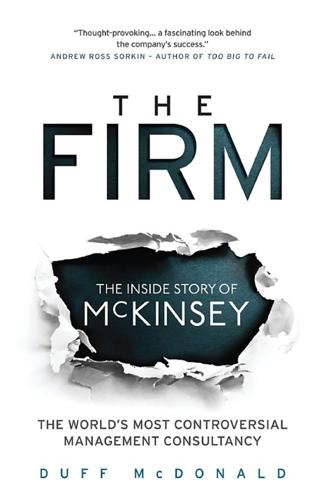
The Firm
by
Duff McDonald
Published 1 Jun 2014
What’s more, he helped keep the firm on its steady trajectory upward: During his six years at the helm, revenues had doubled to $1.5 billion. In 1993 the firm received 50,000 résumés for just 550 new consultant spots. In the course of his career, Gluck remade himself completely. He took to wearing Brioni suits and started going to Studio 54. (He was single at the time, and there were even rumors of his being seen with Hollywood actress Karen Black.) And while he can be quite rightly credited for focusing the firm on the need to know what it was talking about, he also deserves a share of credit for kick-starting the shift toward a more commercial—and greedier—McKinsey.
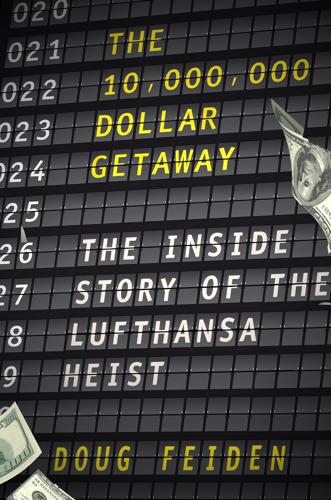
The Ten Million Dollar Getaway: The Inside Story of the Lufthansa Heist
by
Doug Feiden
Published 1 Sep 2014
It’s been home to “Mad Bomber” George Metesky, who, like most New Yorkers, had a grievance against Con Ed when they locked him up in the Creedmore State Psychiatric Hospital. And it’s been home to two former steak restaurateurs named Steve Rubell and Ian Schrager, who went on to make and lose a fortune as co-owners of the notorious Studio 54 discotheque. Later, if you asked them where they were from, they would never say, “from Queens,” but always, “from 54th Street.” Queens has always occupied a special place in the annals of crime. The bank that Willie Sutton finally went to jail for robbing was in Queens. The bar where the multimillion-dollar computer defrauding of Equity Insurance was hatched was in Queens.
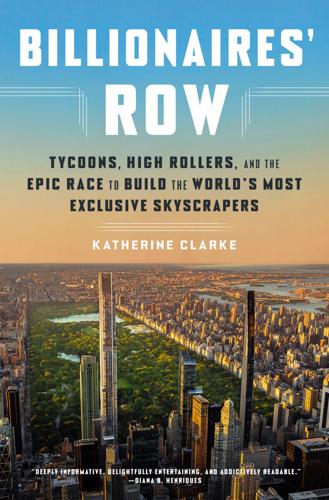
Billionaires' Row: Tycoons, High Rollers, and the Epic Race to Build the World's Most Exclusive Skyscrapers
by
Katherine Clarke
Published 13 Jun 2023
The single twentysomething, a bachelor of his era, with shoulder-length wavy blond hair and tight-fitting jeans, lived above high-rolling television executive neighbors and took to hosting celebrity-studded parties with the likes of Regis Philbin, Salvador Dalí, Andy Warhol, Sammy Davis, Jr., and Joe Pesci. His New Year’s Eve parties were famous; at midnight, he would gather all his friends to watch the fireworks over the park. Sometimes, after drinks, they would walk a few blocks south to Studio 54. As Diamond’s success grew—he would go on to work with artists like Gloria Gaynor and executives like Clive Davis—he plowed more than half a million dollars into turning the rental apartment into a slick bachelor pad, complete with a mirrored ceiling in the bedroom. He wasn’t shy. When the actress Candice Bergen moved into the penthouse next door at 240 Central Park South, he strained to catch a glimpse of her.
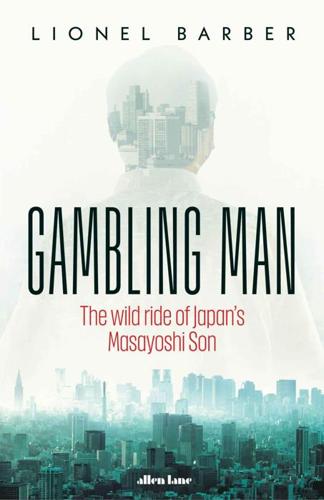
Gambling Man
by
Lionel Barber
Published 3 Oct 2024
Cast of Characters Part One Masayoshi Son, CEO and founder of SoftBank, known as ‘Masa’ Mitsunori Son, father of Masa, king of pachinko in Kyushu Tamako, mother of Masa Son Jong-gyeong, grandfather of Masa, Korean-born, emigrated to Japan in 1917 Lee Wong-jo, Korean-born, inspirational grandmother of Masa Masami Son, née Ono, Japanese wife of Masa Hong Lu, Masa’s first business partner at UC Berkeley Forrest Mozer, UC Berkeley professor, entrepreneur who developed Masa’s first product, the pocket speech translator Tadashi Sasaki (1915–2018), legendary engineer, Sharp executive and mentor to Masa Part Two Yasuhiko Omori, CEO of SoftBank Japan, 1983–6, while Masa was recovering from hepatitis B Yoshitaka Kitao, ex-Nomura Securities, CFO SoftBank (1995–9), head of SoftBank Finance, later SBI, the financial services group based in Tokyo Ted Dolotta, Polish-born computer programmer at Bell Labs, Masa’s first ‘eyes and ears’ in the US Bill Gates, co-founder Microsoft, long-time friend of Masa Kazuhiko Nishi, founder of ASCII software, partner to Bill Gates, Masa’s great rival in Japan Jack Ma, co-founder and longtime CEO of Alibaba, member of SoftBank board (2007–20) Joe Tsai, Taiwanese-Canadian lawyer, co-founder and chair of Alibaba Michael Moritz, Welsh-born venture capitalist and top partner at Sequoia Capital Ron Fisher, South African-born SoftBank executive and consigliere to Masa Jordan ‘Jordy’ Levy, venture capitalist, investor for SoftBank in the US Gary Rieschel, ex-Intel executive, venture capitalist and SoftBank executive in the US Jerry Yang, co-founder Yahoo, business partner with Masa Sheldon Adelson, Las Vegas casino magnate, long-time business ally of Masa Part Three Jeff Sine, co-founder of the Raine Group, long-time personal banker and adviser to Masa Kazuhiko Kasai, long-time adviser to Masa, SoftBank board director (2000–2013), head of SoftBank Hawks baseball team Ken Miyauchi, CEO of SoftBank Mobile and SoftBank Group board director (1988–) Yoshimitsu Goto, chief financial officer and SoftBank Group board Member Kazuko Kimiwada, top financial officer SoftBank Group Tadashi Yanai, CEO and founder of Fast Retailing, parent of fashion brand Uniqlo, and SoftBank Group board member (2001–19) Parts Four and Five Nikesh Arora, ex-Google, president of SoftBank Group, heir apparent, left in 2015 Marcelo Claure, Bolivian-American billionaire, CEO of Sprint, COO SoftBank Group Corporation Rajeev Misra, ex-Deutsche Bank, head of SoftBank Vision Fund (2017–22) Sunil Bharti Mittal, Indian telecoms billionaire and member of SoftBank board (2012–14) Akshay Naheta, ex-Deutsche Bank, head of Northstar, SoftBank’s internal hedge fund Nizar al-Bassam, Saudi-born investor and SoftBank adviser, introduced Masa to Gulf sovereign wealth funds Yasir Al-Rumayyan, head of the Saudi Public Investment Fund, major investor in SoftBank Vision Fund Katsunori Sago, ex-Goldman Sachs, chief strategy officer SoftBank Group (2018–21) Mohammed bin Salman (MBS), Crown Prince of Saudi Arabia Lex Greensill, former Queensland melon farmer turned founder of Greensill, fintech company Adam Neumann, CEO and founder of WeWork Prologue On a chilly Wednesday evening, 2 February 2000, more than 2,000 people crammed into a dimly lit discotheque called Velfarre,fn1 Tokyo’s equivalent of Studio 54 in New York.1 The suit-clad professionals streaming onto the giant underground dance floor were not about to twist the night away. They were waiting for a special guest. A man who embodied their hopes and dreams; a self-styled visionary with the loftiest ambitions for himself, his company and Japan.

Chasing the Scream: The First and Last Days of the War on Drugs
by
Johann Hari
Published 20 Jan 2015
One day in 415 B.C., a partygoing general named Alcibiades smuggled some of the mystery drug out and took it home for his friends to use at their parties. Walton writes: “Caught in possession31 with intent to supply, he was the first drug criminal.” But while it was a crime away from the Temple and other confined spaces, it was a glory within it. According to these accounts, it was Studio 54 spliced with St. Peter’s Basilica—revelry with religious reverence. They believed the drugs brought them closer to the gods, or even made it possible for them to become gods themselves. The classicist Dr. D.C.A. Hillman wrote that the “founding fathers” of the Western world were drug users,32 plain and simple: they grew the stuff, they sold the stuff, and more important, they used the stuff . . .
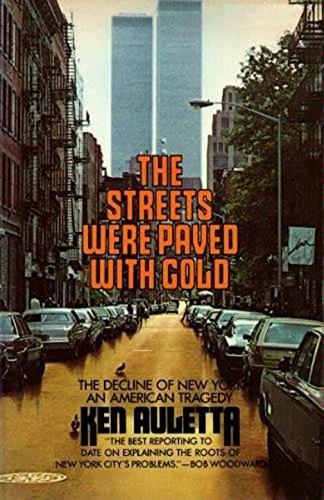
The Streets Were Paved With Gold
by
Ken Auletta
Published 14 Jul 1980
The disco, owner Régine Zylberberg once told writer Julie Baumgold, “has a whole psychology. You must make people into actors and exhibitionists.… People with no names come to see people with names. People with names come to see others they know.” Two thousand elite guests received scroll invitations to attend an unusual New Year’s party at Studio 54, the even more in disco on the West Side of Manhattan. “Nothing new has been done on New Year’s Eve for a long time,” explained thirty-three-year-old co-owner Steve Rubell, “and we thought this year was the year to do it.” Starting at 3 A.M., and for only $40 per person, Grace Jones would be performing—The Grace Jones, who had driven motorcycles onstage, danced half naked in gay discos, her head shaved into a fuzzy cap, her pretty face masked with green and red paint.

The Contrarian: Peter Thiel and Silicon Valley's Pursuit of Power
by
Max Chafkin
Published 14 Sep 2021
Thiel didn’t publicly correct anyone, and some associates had the sense, watching him in 2014 and 2015, that he was holding back, just as he’d held back during the early days of his hedge fund. William Andregg, the entrepreneur whom Thiel had promoted as a possible candidate to cure death, said he found the book and its rollout puzzling—“as if someone watered it down,” he said. Here was the swashbuckling critic of higher education—who liked to say that Harvard was basically Studio 54 for the elite, who had been so profoundly dismissive of MBAs at PayPal that the MBAs who worked for him would hide their degrees from him—launching his book with an event at that great monument to management science, Harvard Business School. Here was the disrupter, appearing in a magazine profile in Fortune that described him as “perhaps America’s leading public intellectual.”
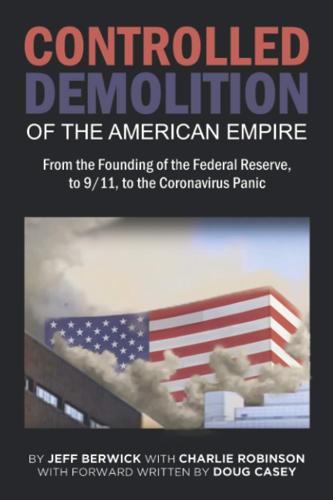
The Controlled Demolition of the American Empire
by
Jeff Berwick
and
Charlie Robinson
Published 14 Apr 2020
The actual difference is that crack is cocaine mixed with baking soda and heated to form a solid paste that can be broken into smaller pieces that are smoked instead of snorted. Not a huge physical change, but this type of cocaine was pushed heavily into the black neighborhoods because it was marketed as a more affordable version of traditional powder cocaine that was all the rage at Studio 54 and with the white community in the late 1970s and early 80s. Once crack exploded on the scene in the mid-80s, the sentencing laws were changed to target crack users and dealers because it now took 100 times more powder cocaine as crack cocaine to receive the same five-, 10-, or 20-year mandatory minimum prison term.
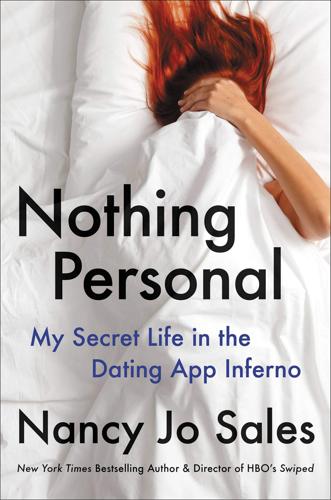
Nothing Personal: My Secret Life in the Dating App Inferno
by
Nancy Jo Sales
Published 17 May 2021
His name is Richard, she says, but she calls him Dick, like all his close friends do. “He’s my quarantine bae. Do you know what that is, a ‘bae’?” she asks. I tell her yes, I know. Constance is in her mid-fifties, like I am. We met in Carl Schurz Park when our daughters were small. “I had my sixteenth birthday at Studio 54,” she told me with a wistful smile that day, the first time I ever remember reminiscing about how things used to be when I was young. Years later, I would see the picture Constance posted on Facebook of a red-lipped beauty in a Madonna-style bustier, a glamorous shot of her taken at the now-shuttered Lucky Strike, from back in the days when we were running around New York, meeting men.
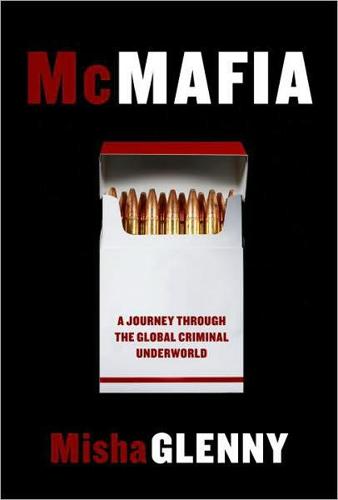
McMafia: A Journey Through the Global Criminal Underworld
by
Misha Glenny
Published 7 Apr 2008
As America’s baby boomers turned from protesting to making money, they sought a champagne-style narcotic that represented this shift in their lives from philosophical introspection to brash acquisitiveness. Cocaine had none of the mess associated with shooting up—just a quick snort and then head out to Studio 54. It wasn’t long before everyone wanted a piece. “No longer is it a sinful secret of the moneyed elite,” reported Time in a July 1981 edition featuring a cocktail glass full of coke on the cover, “nor merely an elusive glitter of decadence in raffish society circles, as it seemed in decades past.
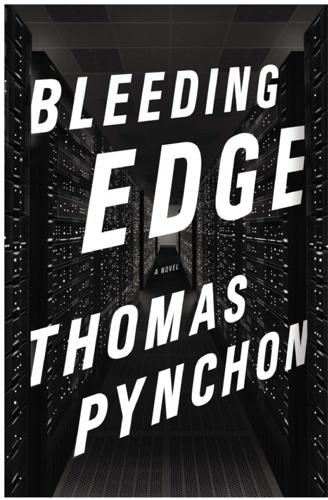
Bleeding Edge: A Novel
by
Thomas Pynchon
Published 16 Sep 2013
“And when I lift your outside hand, it means we’re gonna twirl, just remember go all the way around so you end up facing me.” “On this floor? twirls, you’ll need a permit. Oh, Sid,” she inquires politely a couple-three bars later, “are you by any chance hitting on me?” “Who wouldn’t?” Sid gallantly, “though you shouldn’t rule out trying to piss off the ex.” Sid is a veteran of Studio 54, worked as a toilet attendant, got out on the floor during breaks, at shift’s end gathered up $100 bills forgotten by patrons who’d been rolling them up all night to snort cocaine through, as many as he could get to before the rest of the staff, though he himself preferred to use the recessed filter on a Parliament cigarette as a sort of disposable spoon.
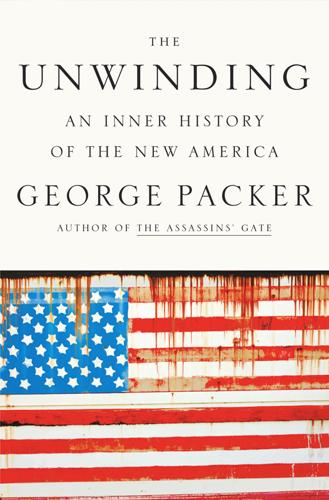
The Unwinding: An Inner History of the New America
by
George Packer
Published 4 Mar 2014
He never did drugs, not once (years later, when he was hired to work at the Clinton White House and was asked about drug use as part of his security clearance, Connaughton said, “I’ve been waiting my entire life to answer that question”). But he drank plenty of bourbon and once danced all night at Studio 54. From November on, the only topic among his coworkers was the size of their year-end bonus. After a year, he was transferred to Chicago. Hating the cold and missing the South, he passed up a twenty-thousand-dollar bonus and, at the start of 1985, jumped over to E. F. Hutton’s office in Atlanta.
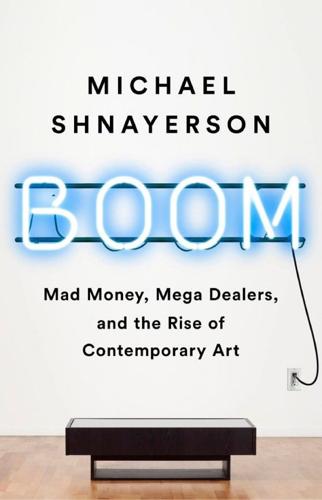
Boom: Mad Money, Mega Dealers, and the Rise of Contemporary Art
by
Michael Shnayerson
Published 20 May 2019
He would become one of the most admired Conceptual artists of his era—and one of the most reclusive. At its peak, the East Village scene drew a new wave of uptown collectors.32 Herb and Lenore Schorr, Elaine Dannheisser, and Don and Mera Rubell all became East Village regulars. Rubell, an Upper East Side gynecologist and brother of Studio 54’s Steve Rubell, cruised the galleries with his wife Mera on a weekly basis. The Rubells had begun collecting art in 1964, allocating funds to pay for it.33 They set themselves a ceiling of no more than $25 or $50 a trip. Still, they found a lot to buy, much of it through the guidance of graffiti artist Keith Haring—and so began one of the most formidable American collections of contemporary art, eventually totaling more than 7,000 artworks by nearly 850 artists, and spawning the Rubell Family Collection museum in Miami.34 S.
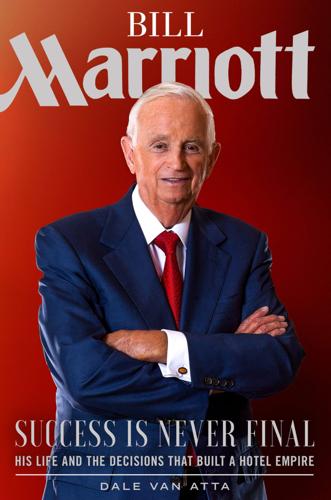
Bill Marriott: Success Is Never Final--His Life and the Decisions That Built a Hotel Empire
by
Dale van Atta
Published 14 Aug 2019
The most interesting new brand was “Edition,” a series of smaller, trendy hotels to be created by Ian Schrager, whom Arne Sorenson courted for a partnership with Marriott. Observed the Washington Post: “An almost perfect contrast with Marriott, a Mormon who does not drink, Schrager came up in the free-wheeling, New York disco days of the 1970s and 1980s, founding Studio 54 and Palladium.” While some predicted disaster from this combination of opposites, others noted that Marriott might do for Schrager what Kohl’s had done for Vera Wang and Target for Isaac Mizrahi. In fact, the partnership worked well, but the expansion of Edition was inevitably slowed down by the burst of the housing bubble, which began a recession in 2008.10 Two of the more important hotels constructed during this time were in Los Angeles and Washington, D.C.

Sweden
by
Becky Ohlsen
Published 19 Jun 2009
Olssons Video (Map; 673 38 00; Odengatan 41; 9pm-3am Wed, Thu & Sat, 5pm-3am Fri, earlier openings in summer) While the retro neon signage, tinted mirrors, dancing pole and cucumber cocktail might allude to a kinky disposition, this Vasastan staple was actually once a shoe shop. The ‘video’ refers to the projected Studio 54–style films, easily upstaged by the hip young crowd, super-cool tunes (from retro to electro) and mighty red mojitos. Head in before 10pm or prepare to queue. Mälarpaviljongen (Map; 650 87 01; www.malarpaviljongen.se, in Swedish; Norr Mälarstrand 63; from 11am summer only) When the sun’s out, few places beat this alfresco waterside resto-bar for some Nordic dolce vita.
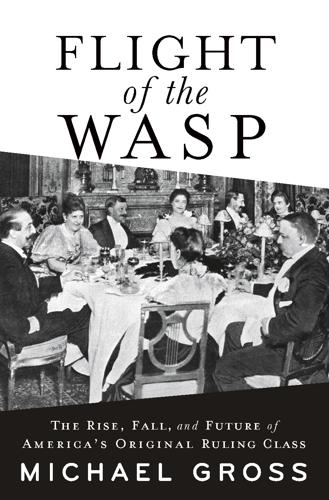
Flight of the WASP
by
Michael Gross
He shot up at a family funeral, where he asked First Lady Nancy Reagan what inspired her Just Say No to Drugs campaign. Sometimes, he said, “I thought I was gonna die.” In the early 1980s, Tower was a fixture on the Reagan-era young social scene, appearing regularly in the party pages of Women’s Wear Daily as one of the era’s pretty young things, bouncing from Studio 54 to Xenon to Regine’s. In 1985, Tower fell for a girl at a party; Pamela Franzheim’s father, a Texas oil man and breeder of thoroughbreds, had been a Nixon-era ambassador. The couple married and together descended into addiction. A son, a third Whitney Tower, was born in 1987. A family intervention and another rehab stint followed.

Facebook: The Inside Story
by
Steven Levy
Published 25 Feb 2020
There were consequences. But those organic protections disappeared when people you hardly knew, or didn’t even know at all, could in theory put things in your stream. Or when people you did know, and didn’t like, now had a way of bothering you. It was flipping a teenage-only early hours club into Studio 54, the kids suddenly joined by denizens of the demimonde. The privacy officer Chris Kelly “sounded the alarm bells” to Zuckerberg and the management team. Everyone agreed that people should be safe on Facebook, but actually doing something about it was another matter. Kelly was used to this. “It would often take a blowup to actually kind of get the company to refocus,” he says.
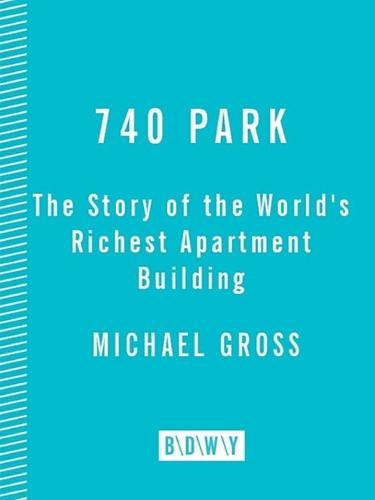
740 Park: The Story of the World's Richest Apartment Building
by
Michael Gross
Published 18 Dec 2007
Less than two years later, she sold it for $7 million (a lot of money, but $9 million less than it was reportedly listed for). Saul and Gayfryd had moved from 740 into a hotel in May 2000, but after disposing of Quogue, Gayfryd bought a town house two blocks from their former home from Donald and Mera Rubell, the art-collecting brother and sister-in-law of Studio 54’s co-founder Steve Rubell. WHATEVER IS LEFT OF SAUL’S FORTUNE, IT NOW SEEMS RELATIVELY SAFE. Lawsuits lingered (including the one filed by Saul’s eighty-three-year-old mother; it was eventually settled), lenders had their hands out, and regulators were swarming, but finally Steinberg walked away from the wreckage.
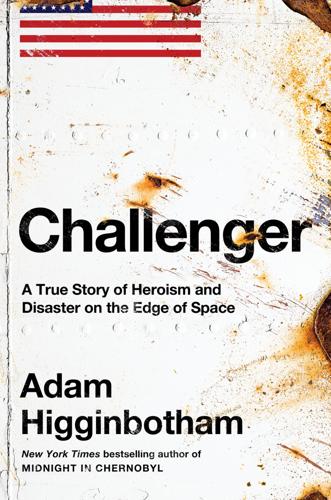
Challenger: A True Story of Heroism and Disaster on the Edge of Space
by
Adam Higginbotham
Published 14 May 2024
From then on, the pace of shuttle missions increased, passing a further series of landmarks in American space exploration: the next flight, just two months later, made Sally Ride the first female astronaut, and an international celebrity; at the end of August, Guy Bluford became the first African American in orbit. Afterward, Bluford embarked on a national tour of schools and colleges, was honored by the NAACP alongside the first Black Miss America, Vanessa Williams—and photographed partying in New York at Studio 54. Leaving Cape Canaveral at a little after 2:30 a.m. Eastern time, Bluford’s mission marked the first night launch and landing of the shuttle, and the first use of a pair of redesigned high-performance solid rocket boosters, on what NASA chiefs initially boasted was “the cleanest mission yet.” But when the spent casings of these boosters arrived back in Morton Thiokol’s plant for refurbishment, the engineers in Utah made a frightening discovery—an entirely new problem unrelated to their previous worries about O-rings or joint rotation.

Lonely Planet London City Guide
by
Tom Masters
,
Steve Fallon
and
Vesna Maric
Published 31 Jan 2010
HOXTON BOUTIQUE Map Fashion & Designer 7684 2083; www.hoxtonboutique.co.uk; 2 Hoxton St; 10.30am-6.30pm Mon-Fri, 11am-6pm Sat; Old St If you want to look like a true Hoxtonite, come here for your (women’s) street wear – there’s Isabel Marant, Hussein Chalayan, Repetto shoes and the shop’s own brand, +HOBO+. The boutique is meant to resemble Studio 54, with a mirror ball, white walls and neon lights. JUNKY STYLING Map Fashion & Designer 7247 1883; www.junkystyling.co.uk; 12 Dray Walk, Old Truman Brewery, 91 Brick Lane E1; 11am-5.30pm Mon-Fri, 10.30am-6pm Sat & Sun; Liverpool St or Aldgate East On retail-friendly Dray Walk, Junky ‘recycles’ traditional suits into sleek, eye-catching fashion pieces.

Tools of Titans: The Tactics, Routines, and Habits of Billionaires, Icons, and World-Class Performers
by
Timothy Ferriss
Published 6 Dec 2016
So there are all of these granular questions like: What is it that we’re learning? Why are you learning it? Are you going to college because it’s a 4-year party? Is it a consumption decision? Is it an investment decision where you’re investing in your future? Is it insurance? Or is it a tournament where you’re just beating other people? And are elite universities really like Studio 54 where it’s like an exclusive nightclub? I think if we move beyond the education bubble that we’re living in today, the future will be one in which people can speak about these things more clearly.” (Listen to his entire riff on this in episode #28 at 17:24.) ✸ What one thing would you most like to change about yourself or improve on?
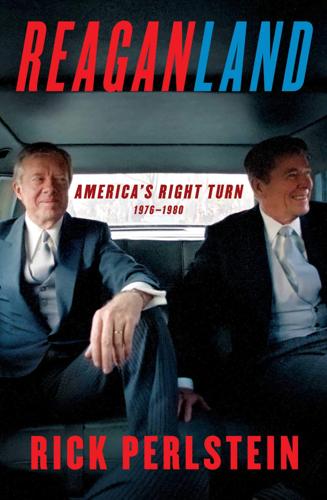
Reaganland: America's Right Turn 1976-1980
by
Rick Perlstein
Published 17 Aug 2020
The next day, he was thrilled to record that they carved three minutes off their time. He returned home, swore in his new energy secretary—and was greeted by an ugly front-page Post headline: “FBI Investigating Alleged Cocaine Use by Jordan.” The allegation was that on June 27, 1978, in the basement of the New York City celebrity disco Studio 54, in the presence of club owner Steve Rubell and a drug dealer, Carter’s chief of staff had approached a publicist and asked, “Where do you get coke?” All three supposed witnesses appeared on ABC’s 20/20 to relate their recollections in detail. Jordan furiously denied it. The following spring, after a thorough investigation, a special prosecutor would conclude that Rubell had made the whole thing up in a desperate attempt for leverage to get a federal tax case against him dismissed.
…
“Within a year from today, by September 15, 1981, these five goals will be accomplished,” Reagan said—thanks to this “contract with the American people.” * * * THE CARTER CAMPAIGN HIT SNAGS. On September 12, his campaign manager Tim Kraft quit to fight allegations that he had used cocaine. This was a strange and unfair development. When Hamilton Jordan had been falsely accused of snorting coke in the basement of Studio 54, a feature of the ethics package the president proudly signed into law in 1978 kicked in: an independent council was appointed, as required anytime there was evidence that a high-level executive branch official might have committed a crime. But on the way to exonerating Jordan, a witness told independent counsel Arthur Christy that he had once seen Kraft using the drug, and another time observed events that suggested he might have used it.
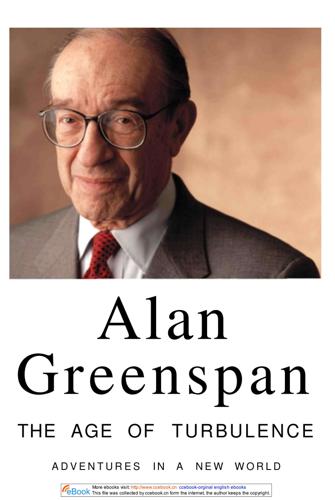
The Age of Turbulence: Adventures in a New World (Hardback) - Common
by
Alan Greenspan
Published 14 Jun 2007
Barbara, however, interacted constantly with news, sports, media, and entertainment personalities, interviewing a tremendous range of people, from Judy Garland to Mamie Eisenhower, from Richard Nixon to Anwar Sadat. She also had show-business roots. Her father, Lou, had been a big-time nightclub owner and Broadway producer—his Latin Quarter clubs in Manhattan and Miami Beach were the 1950s equivalent of the Stork Club of the 1930s, or more to the point by this time, the disco era's Studio 54. During the several years we dated and afterward (we remain good friends), I escorted Barbara to lots of parties where I met people I otherwise would never have encountered. I usually thought the food was good but 80 More ebooks visit: http://www.ccebook.cn ccebook-orginal english ebooks This file was collected by ccebook.cn form the internet, the author keeps the copyright.
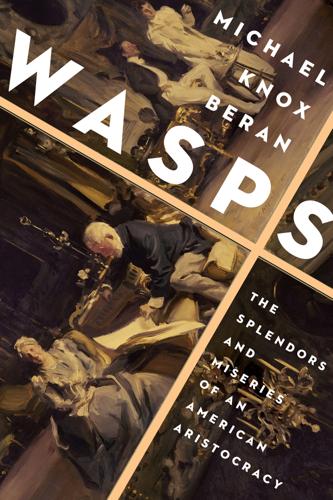
Wasps: The Splendors and Miseries of an American Aristocracy
by
Michael Knox Beran
Published 2 Aug 2021
He was only fourteen, but (so vicious is Fama) he was said to possess an extensive knowledge of human degeneracy, and a nose for depravity that might favorably have impressed Madame de Merteuil, the witch in de Laclos’s novel.VI He had, it was generally believed, lost his virginity to a sun-withered matron in a preppy summer colony, and young as he was, he was reputed to have ingested the fashionable narcotics of the age—it was the era of “Studio 54”—and pronounced them insipid. (In fact he was abstemious.) He was credited (here the reports were closer to the truth) with having been passionately loved by the prettiest Brearley girls, and with having been as jealously abhorred by their mothers, who, it was said, were in love with him themselves.
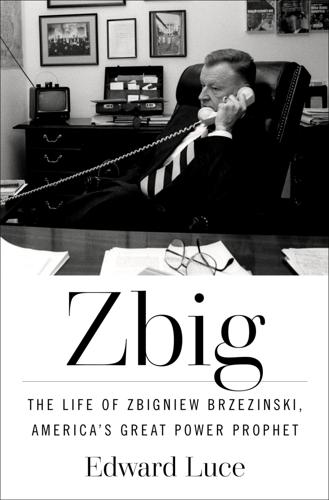
Zbig: The Life of Zbigniew Brzezinski, America's Great Power Prophet
by
Edward Luce
Published 13 May 2025
Zahedi’s parties at his gilded official residence on Massachusetts Avenue’s Embassy Row were in a decadent class of their own.94 Champagne flowed like water, Caspian Sea caviar was placed next to edible flower arrangements, and movie stars such as Barbra Streisand and Liza Minnelli lolled on leopard skin–covered chaise longues. Drugs were consumed on the premises. On party nights, the road outside was gridlocked with limousines. Though married to the shah’s daughter, Zahedi dated the actress Elizabeth Taylor and the Washington Post’s star reporter Sally Quinn. His residence was the closest DC came to New York’s Studio 54. Through successive administrations, Washington’s power brokers had been so seduced by the shah that to them, he was Iran and Iran was the shah. In 1971, the cream of DC had decamped to Persepolis in Iran’s Fars province, where the shah had hosted a neo-Caligulan celebration of twenty-five hundred years of the Iranian monarchy, styling himself “King of Kings,”95 thus linking himself to Cyrus the Great.
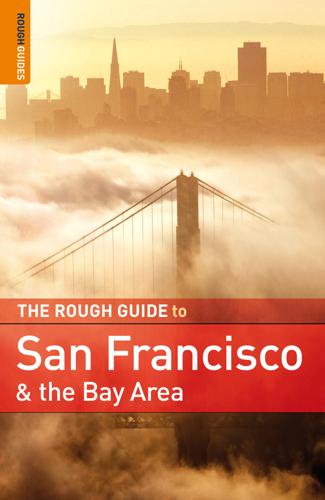
Rough Guide to San Francisco and the Bay Area
by
Nick Edwards
and
Mark Ellwood
Published 2 Jan 2009
The constant stream of sailors provided an endless supply of customers looking for illicit entertainment, and earned the district the nickname “Baghdad by the Bay”; the area was also a nexus for shanghaiing, which saw hapless young males given Mickey Finns and, once unconscious, taken aboard sailing ships into involuntary servitude. The city’s 1906 disaster, coupled with dwindling numbers of sailors, sent the area into a decline; the brothel owners responded by sprucing up the streets and turning the dingy dance halls into the early twentieth century’s answer to Studio 54. The Barbary Coast remained raunchy enough to attract the attention of state lawmakers – courtesy of some shrill lobbying from William Randolph Hearst’s San Francisco Examiner newspaper – and in 1915, they passed an antivice act designed to stifle further shady activity in the neighborhood. Certain Down town San F ranc i s c o | Chinatown locals protested unsuccessfully for two years, but the morning after they lost the final legal battle, the police barricaded the area and shut down almost every establishment on the spot.
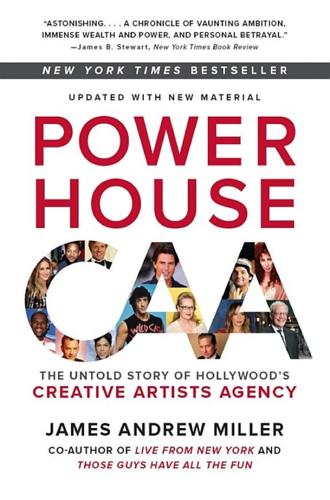
Powerhouse: The Untold Story of Hollywood's Creative Artists Agency
by
James Andrew Miller
Published 8 Aug 2016
—NICOLE KIDMAN 8 Cool Summers: 2010–2016 It will never rain roses: when we want to have more roses, we must plant more roses. —GEORGE ELIOT ARI EMANUEL: Here was the turning point, the very end for them: about six or seven years ago, Richard Lovett went out and said, “We’re going to represent everybody. We want 100 percent market share.” It was like he took Studio 54 at its height—when you couldn’t get in because it was so exclusive—and just said, “Fuck it, we’re letting everybody in.” Some people freaked out, but I said, “This is the greatest day of our lives! Do you understand this! This guy is taking Tiffany’s and turning it into Sears. Hallelujah!” We have won because he doesn’t understand what this business is about.

Command and Control: Nuclear Weapons, the Damascus Accident, and the Illusion ofSafety
by
Eric Schlosser
Published 16 Sep 2013
A number of songs released in 1980 had the ability to worm their way into your brain and resist all attempts to dislodge them: “Do That to Me One More Time,” by Captain & Tennille; “You May Be Right,” by Billy Joel; “Sailing” and “Ride Like the Wind,” by Christopher Cross. Disco was finally dead, its fate sealed by the closing of the nightclub Studio 54 and the opening of Can’t Stop the Music, a movie starring the Village People. Punk was dead, too, and taking its place was the lighter, dance-oriented New Wave of Devo, The Police, The B-52’s, and Talking Heads. The hard rock of The Rolling Stones had given way to the softer pop sounds of “Emotional Rescue.”
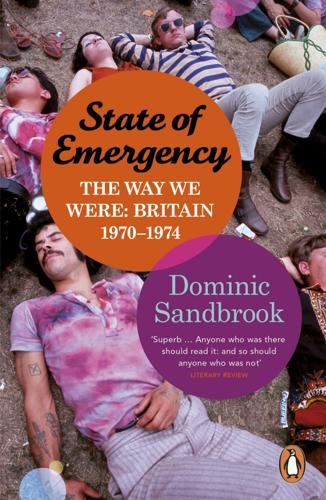
State of Emergency: The Way We Were
by
Dominic Sandbrook
Published 29 Sep 2010
Frankenstein Must Be Destroyed (1969), for instance, boasted a gratuitous rape scene added over the objections of the director and actors, while Dracula AD 1972 was little better, transposing the Count and Van Helsing to the streets of Swinging London (albeit five years behind the times). It was hardly surprising that audiences stayed away; by the late 1970s, horror production had tailed off, and when Hammer went bankrupt in 1979 it marked a miserable end to what had once been the model of a successful small studio.54 Hammer’s fate makes a perfect metaphor for what happened to the rest of the British film industry. The second biggest genre of the day, for example, was made up of sex comedies such as Confessions of a Window Cleaner (1974) and Come Play with Me (1976). Again, some critics have done their best to speak up for them; unfortunately, not only were they not sexy, they were not even very funny.